Colonization of Mars
description: the hypothetical human habitation and terraforming of the planet Mars
113 results
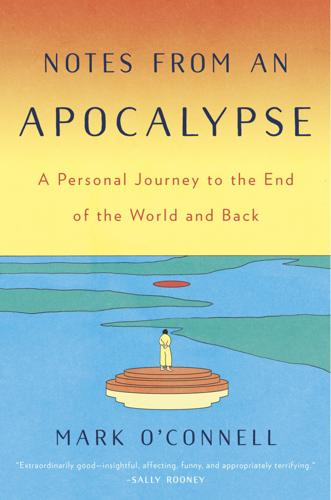
Notes From an Apocalypse: A Personal Journey to the End of the World and Back
by
Mark O'Connell
Published 13 Apr 2020
On these floating utopian micro-states, wealthy tech innovators would be free to go about their business without interference from democratic governments. (Thiel was an early investor in, and advocate of, the seasteading movement, though his interest has waned in recent years.) Then you mined the moon for its ore and other resources, before moving on to colonize Mars. This last level of the game reflected the current preferred futurist fantasy, most famously advanced by Thiel’s former PayPal colleague Elon Musk, with his dream of fleeing a dying planet Earth for privately owned colonies on Mars. The influence of The Sovereign Individual was all over the show.
…
Together they ascend the elevator up the launch tower to where the space shuttles once began their trajectory into space, and he explains to the boy that in years past this was exactly how the astronauts themselves would have ascended before launching. As Musk and his son look out over the Kennedy Space Center, the green swampland, the Atlantic Ocean beyond, the billionaire speaks in voice-over of his company’s mission to colonize Mars, and of how it had always seemed to him that we should have gone there by now, that we somehow lost our way. “And now,” he says, “we’re going to get back there.” The series ends with a scene of the first successful launch of SpaceX’s reusable rocket, a crucial aspect of the company’s plan for establishing a colony on Mars.
…
There was a talk by a Lutheran bishop entitled “Is Mars Exploration Virtuous?” (Given that the Lutheran bishop was also a founding member of the Mars Society, I felt confident in predicting that the answer would be yes.) All these questions were in themselves interesting, but what I really wanted to know was where this fixation on colonizing Mars arose from, what it revealed about our relationship with the future of our own planet. I had long been of the opinion that there was no more lurid symptom of our current cultural malaise than the notion that we needed a “backup planet” for humanity. Although its advocates spoke of it as a manifestation of an indomitable spirit of exploration and adventure, it seemed to me to represent something like the opposite: an absolute surrender to an exhaustion in the bones of civilization.

The Case for Space: How the Revolution in Spaceflight Opens Up a Future of Limitless Possibility
by
Robert Zubrin
Published 30 Apr 2019
All the best, Robert Let's hope he listens. COLONIZING MARS We hold it in our power to begin the world anew. —Thomas Paine, 1776 The question of colonizing Mars is not fundamentally one of transportation. If we were to use the Starship or a comparable vehicle to launch habitats carrying settlers to Mars on one-way trips, firing them off at the same rate we launched the space shuttle when it was in its prime, we could populate Mars at a rate comparable to that which the British colonized North America in the 1600s—and at much lower expense relative to our resources. No, the problem of colonizing Mars is not moving large numbers to the Red Planet, but the ability to transform Martian materials into resources to support an expanding population once they are there.
…
Noah Robischon and Elizabeth Segran, “Elon Musk's Mars Mission Revealed: SpaceX's Interplanetary Transport System,” Fast Company, September 27, 2016, https://www.fastcompany.com/3064139/elon-musks-mars-mission-revealed-spacexs-interplanetary-transport-system (accessed October 14, 2018). 7. Robert Zubrin, “Colonizing Mars: A Critique of the SpaceX Interplanetary Transport System,” New Atlantis, October 21, 2016, https://www.thenewatlantis.com/publications/colonizing-mars (accessed October 14, 2018). 8. Adam Baidawi and Kenneth Chang, “Elon Musk's Mars Vision: A One-Size-Fits-All Rocket. A Very Big One,” New York Times, September 27, 2017, https://www.nytimes.com/2017/09/28/science/elon-musk-mars.html (accessed October 14, 2018). 9.
…
But Falcon Heavy is by no means the limit to SpaceX's ambitions. In remarks at the International Astronautical Congress (IAC) in Guadalajara, Mexico, on September 29, 2016, SpaceX president Elon Musk revealed to great fanfare his company's plans for an Interplanetary Transport System (ITS).6 According to Musk, the ITS would enable the colonization of Mars by the rapid delivery of a million people in groups of a hundred passengers per flight, as well as large-scale human exploration missions to other bodies, such as Jupiter's moon Europa. Figure 4.1. Mission sequence chart for the “Dragon Direct” plan. Every two years, three Falcon Heavies are launched, sending an ascent vehicle, an Earth Return Vehicle, and a piloted habitat.

The Space Barons: Elon Musk, Jeff Bezos, and the Quest to Colonize the Cosmos
by
Christian Davenport
Published 20 Mar 2018
NASA officials knew not too many people were in the market to lease a fixer-upper launchpad, but they had their eye on one possible tenant: an eccentric billionaire who had started a space company from scratch with absolutely no experience with rockets, but talked about colonizing Mars—a wild card named Elon Musk, who was now on an improbable, but epic, roll. THE FALCON 9 had flown successfully. And SpaceX was moving ahead with developing a more robust version of its Dragon spacecraft that would carry astronauts, not just cargo. It was talking about building an even bigger rocket, called the Falcon Heavy, which would allow it to pursue Musk’s original goal of colonizing Mars. Musk even put a price tag on it, telling the BBC, “Land on Mars, a round-trip ticket—half a million dollars.
…
MUSK BEGAN THINKING seriously about that question, and the probability of an “eventual extinction event,” as he called it. The solution: Find another planet to live on. Make humans a multiplanet species, and create a backup hard drive for the human race there, just in case Earth crashes like a faulty computer. The atmosphere on Venus is too acidic. Mercury is too close to the sun. The best bet, he thought, is to colonize Mars. One night he was driving home from a party on Long Island to New York City with his college friend Adeo Ressi. It was late, and people were asleep in the backseat. But the two friends were deep in an animated discussion. “We were both interested in space, but we dismissed it as soon as it came up.
…
And its presence on the curb created a stark juxtaposition that was clear and calculated. Inside the museum was NASA’s grand past—the lunar lander, the Mercury capsule, the echoes of Apollo enshrined alongside the orphaned dreams it had spawned. Outside was the man who would create a new future—cheap, reliable spaceflight, all with the goal of one day colonizing Mars—a promise as improbable as the young eccentric making it. He wasn’t just selling his rocket, but what it represented—the crazy idea that a small startup could succeed in space. Beal had gotten further than many had thought, and he’d put a nice dent in the wall that kept untraditional players out of the space business.

Survival of the Richest: Escape Fantasies of the Tech Billionaires
by
Douglas Rushkoff
Published 7 Sep 2022
This was probably the wealthiest, most powerful group I had ever encountered. Yet here they were, asking a Marxist media theorist for advice on where and how to configure their doomsday bunkers. That’s when it hit me: at least as far as these gentlemen were concerned, this was a talk about the future of technology. Taking their cue from Tesla founder Elon Musk colonizing Mars , Palantir’s Peter Thiel reversing the aging process , or artificial intelligence developers Sam Altman and Ray Kurzweil uploading their minds into supercomputers, they were preparing for a digital future that had less to do with making the world a better place than it did with transcending the human condition altogether.
…
As holders of The Mindset, they have been rejecting the collective polity all along, and embracing the hubristic notion that with enough money and technology, the world can be redesigned to one’s personal specifications. Their various self-sovereignty escape initiatives amount to the same techno-libertarian world-building fantasy exemplified by the ultra-billionaire’s competition to colonize Mars, but designed for implementation right here on Earth. Only trillionaires will actually make it into space to terraform planets, anyway. The cohort who solicited my doomsday advice readily admitted they were “low-level billionaires” who could at best hitch a ride with Elon Musk, Richard Branson, or Jeff Bezos—who are themselves still at least a few generations away from colonizing anything.
…
If Jeff Bezos already controls Amazon Web Services—the infrastructure through which over a third of our networked interaction already takes place—why shouldn’t he be the one to build the space program through which humanity migrates to its next home? If Elon Musk could become the richest person in the world by transforming the automotive industry with his Tesla cars, shouldn’t he be entitled to realize his dream of colonizing Mars with giant domes? When the tech fetishist’s childlike hope for a digital womb combines with the billionaire’s faith in a winner-takes-all competitive marketplace, look out. It results in a brand of activist futurism that sees the present—our reality, including us—as an impediment to their vision of what could and what should be.

Case for Mars
by
Robert Zubrin
Published 27 Jun 2011
As we will see, the government may do this, or perhaps it will be done by opening base cargo deliveries from Earth to private competition, but it will be done. It will become ever cheaper to go to Mars, and ever cheaper to maintain people once they are there. As more people steadily arrive and stay longer before they leave, the population of the base will come to resemble a town—and will actually grow into one. The colonization of Mars will then begin. 8: THE COLONIZATION OF MARS This proposition being made publike and coming to the scanning of all, it raised many variable opinions amongst men, and caused many fears & doubts amongst themselves. Some, from their reasons & hops conceived, laboured to stirr up & incourage the rest to undertake and prosecute the same; others, againe, out of their fears, objected against it, & sought to diverte from it, aledging many things, and those neither unreasonable nor unprobable; as that it was a great designe, and subjecte to many unconceivable perills & dangers...
…
—Giordano Bruno “On the Infinite Universe and Worlds,” 1584 CONTENTS Foreword by Arthur C. Clarke Preface 1 Mars Direct 2 From Kepler to the Space Age 3 Finding a Plan 4 Getting There 5 Killing the Dragons, Avoiding the Sirens 6 Exploring Mars 7 Building the Base on Mars 8 The Colonization of Mars 9 Terrraforming Mars 10 The View from Earth Epilogue: The Significance of the Martian Frontier Special Addendum Glossary Notes References Index FOREWORD The planet Mars is where the action will be in the next century. It is the only world in the solar system on which there is a strong probability of finding Life Past, and perhaps even Life Present.
…
While the initial exploration phase can be accomplished with small crews of just four members each operating out of Spartan base camps spread over vast areas of the Martian surface, building a base will require a division of labor entailing a larger number of people, perhaps on the order of fifty individuals, equipped with a wide variety of equipment and substantial sources of power. In short, the purpose of the base-building period is to develop a mastery of those techniques required on Mars to produce food, clothing, shelter, and everything else needed to make colonizing the Red Planet possible. FOUNDING THE BASE Under the Mars Direct plan, crews open new territories on Mars every other year to exploration and possible settlement. Eventually, one of these outposts will be considered the best location for the first permanent Mars base. Once that location is identified, all new crews will land their spacecraft at the designated site.

The End of Astronauts: Why Robots Are the Future of Exploration
by
Donald Goldsmith
and
Martin Rees
Published 18 Apr 2022
The arguments against the desirability of mass emigration to Mars emphasize that creating a million-person habitat there would prove more difficult than establishing a million people at the South Pole or on the bed of the Pacific Ocean. Jeff Bezos’s Blue Origin corporation also concentrates on improving systems to launch astronauts far beyond the Earth. In contrast to Musk’s determination to colonize Mars, Bezos centers his immediate goals on creating lunar colonies, declaring in 2019 that “it’s time to go back to the moon, this time to stay.” In 2020, NASA’s Artemis program awarded a contract worth $579 million to a Blue Origin consortium that includes the aerospace giants Lockheed Martin and Northrop Grumman for the development of an integrated system to land astronauts on the moon and bring them back to Earth.
…
We might eventually find ways to make Martian soil amenable to terrestrial organisms, a task that could vary from location to location, but as the geochemist Laura Fackrell has summarized the situation, “It’s not quite as easy as it looks in The Martian.”16 To enthusiasts of human exploration and colonization on Mars, tasks such as improving Martian soil could well fall to hardworking robots, fundamentally there to support a continuing human presence on Mars. Future colonists would explore the red planet in detail; they would provide a key base for exploration of the worlds much farther from the sun and the Earth; and, in some visions, their population could eventually increase to a society of millions of people on a neighbor planet.
…
For the language in the 1988 NASA authorization act, H.R. 4218, 100th Congress, 2nd Session, see https://space.nss.org/wp-content/uploads/Space-Settlement-Act-Of-1988.pdf, Section 3(a)(2)(d). 3. Michael Sainato, “Stephen Hawking, Elon Musk and Jeff Bezos Think the Earth Is Doomed,” Observer, June 30, 2017, https://observer.com/2017/06/colonizing-mars-elon-musk-stephen-hawking-jeff-bezos/. 4. Corey S. Powell, “Jeff Bezos Foresees a Trillion People Living in Millions of Space Colonies. Here’s What He’s Doing to Get the Ball Rolling,” NBC News, May 15, 2019, https://www.nbcnews.com/mach/science/jeff-bezos-foresees-trillion-people-living-millions-space-colonies-here-ncna1006036; Shawn Langlois, “Elon Musk Says Jeff Bezos’s Plan to Colonize Space ‘Makes No Sense,’ ” MarketWatch, May 23, 2019, https://www.marketwatch.com/story/elon-musk-jeff-bezos-space-colony-plan-makes-no-sense-2019-05-23; Sainato, “Stephen Hawking.” 5.
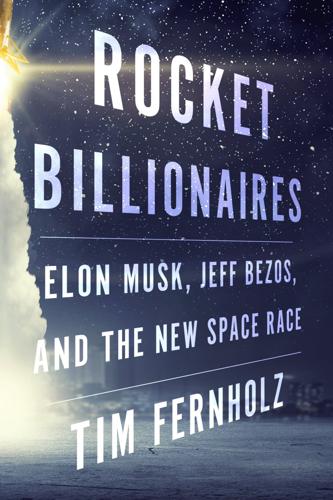
Rocket Billionaires: Elon Musk, Jeff Bezos, and the New Space Race
by
Tim Fernholz
Published 20 Mar 2018
Wells’s War of the Worlds that depicted a coalition of Belle Époque scientists led by Thomas Edison, Lord Kelvin, and Wilhelm Röntgen leading an international space invasion force. Red Mars imagined interplanetary adventurers departing in 2026. That seemed like a reasonable goal to Musk and Zubrin. If that sounds crazy now, think of how it would have sounded before Musk had ever launched a rocket. The first obstacle to colonizing Mars is paying for the trip. Immediately after the Apollo program, NASA envisioned putting humans on Mars, but the expense proved too daunting for Richard Nixon to sign off on that vision. By the turn of the century, fixed budgets and a calcified bureaucracy prevented the US space agency from expanding its human space programs beyond building the ISS, a task begun in 1998 and largely completed in 2011.
…
A former girlfriend told reporters in the nineties that his business success was driven by his desire to go to the stars himself; according to Stone, Bezos’s high school valedictory address had proposed the idea of “saving humanity by creating permanent human colonies in orbiting space stations while turning the planet into an enormous nature preserve.” You get the idea. The vision that captivated Bezos still drives him now. It is a different strain of space economic utopianism than the one that drives those who propose colonizing Mars, and it holds itself out as the more pragmatic approach. In this narrative, kick-started by Gerard O’Neill’s 1976 book The High Frontier, the fragility of the human species on earth is intimately connected to industrialization—the way the massive use of fossil fuels to drive the economy has altered the ecosystem.
…
Blue, on the other hand, seemed to love patents. One of the public signs of Blue’s reemergence after 2010 was a proliferation of patent filings on exactly the kind of components needed for reusable rockets—steerable engines, methods for lightweight construction, and guidance techniques. Just as lifting the heavy equipment needed to colonize Mars motivated SpaceX’s desire for reusable rockets, it was equally important to Bezos’s goal of shifting industrial capacity into orbit, followed by human civilization writ large. Bezos holds numerous patents related to Amazon’s marketplace and subscription services, but he has put his name on only one of Blue’s: “Sea landing of space launch vehicles and associated systems and methods.”

Space 2.0
by
Rod Pyle
Published 2 Jan 2019
Financial realities will impact the choice, but there’s more to it than that for Musk and SpaceX. “There’s a business case for Mars at the projected cost for our new system,” Shotwell explains. “That said, even if there were no business benefit, I think we’d still do this. This has always been Elon’s drive; this is why he founded the company.” His vision is to colonize Mars, hopefully at a profit. “Like the East India Trading Company of the seventeenth century, if you build it, the money will come. [If ] you go and explore . . . you will find your wealth, you will find the business case,” Shotwell says. But clearly, if the US government will work in collaboration with SpaceX to send payloads and people to the moon as Musk continues Mars-related research and development, SpaceX will gladly oblige.
…
“Why We Go to the Moon.” Air & Space/Smithsonian, October 17, 2017. 137Shukman, David. “Humans at risk of lethal ‘own goal.’” BBC News, January 19, 2016. 138Interview with the author, June 2017. 139For a full transcript of the speech, see: Mosher, Dave. “Here’s Elon Musk’s complete, sweeping vision on colonizing Mars to save humanity.” Business Insider, September 29, 2016. 140Ibid. 141Davenport, Christian. “Jeff Bezos on nuclear reactors in space, the lack of bacon on Mars and humanity’s destiny in the solar system.” Washington Post, September 15, 2016. 142Interview with the author, November 2016. 143“NASA’s Griffin: ‘Humans Will Colonize the Solar System.’ ” Washington Post, September 25, 2005. 144“Summary of H.R. 4752—Space Exploration, Development and Settlement Act of 2016.” www.congress.gov/bill/114th-congress/house-bill/4752.
…
V.), 172, 173 dominance, 76–77 Double Asteroid Redirection Test mission (DART), 228, 228–229 Dove satellite, 160 Dragon 2, 11, 19, 50, 50, 55, 123, 130, 159, 210 Dragon rocket, 119, 123, 126, 130 Draper Fisher Jurvetson Venture Capital (DFJ), 155, 158 Dream Chaser, 11, 52, 52, 55 Dyson, Freeman, 36, 241 Dyson Sphere, 241 E Earth orbit, 245–246 Earth suborbital (as space destination), 59, 245–246 East India Trading Company, 125–126 Edwards Air Force Base, 95 Ehrenfreund, Pascale, 173–174 Elachi, Charles, 169–170 electrical fields, 90 Electron rocket, 103–104 elimination of waste, 70, 107 Endeavor, 3 Energia booster, 128 entrepreneurs. see space entrepreneurs Epsilon rocket, 175 ESA. see European Space Agency European Space Agency (ESA) accomplishments of, 172–174 and crewed landings, 247 defined, 289 HTV cargo, 173 and international space agencies, 181 lowering of launch costs by, 148 modules, 166 Moon Villages, 65, 242 and NASA, 170 partnerships with, 48, 167, 195 successful trips to Mars, 177 work on Huygens probe by, 169–170 EVAs. see Extra Vehicular Activities Eve airplane, 95, 96, 101 exercise, in space, 82 expeditionary model, settlement vs., 237 Explore Mars, 270 Explorer 1 satellite, 40, 40–41 extended confinement, 76, 76 Extra Vehicular Activities (EVAs), 70, 71, 107 F FAA. see Federal Aviation Administration fairings, 119, 126, 194, 259, 261. see also payloads FAITH (Final Assembly, Integration, and Test Hanger), 95, 100 Falcon 1 (shuttle), 115, 126, 156, 156, 158, 159, 160 Falcon 9 (shuttle) for commercial launches, 194 under construction, 215 cost of, 128, 130 and COTS program, 215 defined, 289 first flight of, 126 first launch of, 156 with hypersonic grid fins, 127 Merlin engine for a, 131 and reusability, 39, 119, 259 and SpaceX, 11, 112–115, 113–115, 118, 120–121 as US rocket, 55 at Vandenberg A.F.B., 133 Falcon Heavy construction of, 123 defined, 289 Delta IV Heavy and, 142, 146 first launch of, 129, 255–257, 256, 258–261, 261 for interplanetary travel, 128 New Glenn and, 136, 137, 245 reusability of, 259 and SpaceX, 11 as US rocket, 55 Farshchi, Shahin, 161 FCC (Federal Communications Commission), 131 feathering system, 98–99 Federal Aviation Administration (FAA), 99, 131, 220 Federal Communications Commission (FCC), 131 femtosats, 103 Final Assembly, Integration, and Test Hanger (FAITH), 95, 100 Firefly Aerospace, 103 flight surgeons, 73, 79, 108 Forbes magazine, 151 Founders Fund, 126 France, 79, 172–173 Freedom space station, 166, 166 French postal services, 211 Friedman, Louis, 265 Friendship 7 spacecraft, 164 fuel for achieving orbit, 16 cost of, 128 for leaving Martian surface, 63 liquid methane as, 138 for radiation shielding, 88 for SpaceX rockets, 144 storage of, 148 fuel depots, 159, 204, 208, 235 fuselages, 122, 123 G Gagarin, Yuri, 42, 42 galactic cosmic rays (GCRs), 83, 90, 290 Garver, Lori, 30, 30, 209, 226, 251 Gateway, 241–242, 246, 249, 289 GCRs (galactic cosmic rays), 83, 90, 290 Gemini 4 mission, 71 Gemini spacecrafts, 44, 45, 71, 192 genetic damage, from radiation, 86 George Washington University, 186–187 geostationary Earth orbit, 59–60, 130 geosynchronous Earth orbit, 59–60, 206 German Aerospace Center, 172–173, 176 Gerstenmaier, Bill, 168, 210–211, 242 getting involved, 263–271 citizen groups, 264–265 expanded opportunities for, 263–266 indirect involvement, 264 and the internet, 264 organizations for, 266–271 Glenn, John, 42, 142, 164 Goddard Space Flight Center, 31 GOES weather satellite, 235 Google, 160 government spaceflight, 246 GPS, 28 gravity artificial, 80, 80–82 on Earth, 20, 20 effects of, on astronauts, 22 micro-, 82, 292 overcoming, 16–18 Greason, Jeff, 217, 219, 251–252 Great Britain, 177, 211 Griffin, Mark, 35, 237, 238 Gross Space Product, 207 Guardian, 98 H H3 launch vehicle, 175 Hadfield, Chris, 179 “handshake in space,” 166 Harvard University, 36 Haughton-Mars Project Research Station, 270–271 Hawking, Stephen, 35, 235 Hayabusa probe, 175, 175 Hayn Crater, 62 heat-absorbing tiles, 18–19 high-altitude aircrafts, 69–70, 70 The High Frontier: Human Colonies in Space (O’Neill), 240, 241 Highway 58 (California), 94 HI-SEAS simulator, 78 The Hitchhiker’s Guide to the Galaxy (Adams), 261 Hopkins, Mark, 36, 265 Hoshide, Akihiko, 28 HTV spacecraft, 173–174, 175 Hubble Space Telescope, 2 Hudson Bay Company, 251 Human Exploration and Operations, 168, 210 humans destinations for, in space, 59–66 and need for gravity, 81 spacecrafts for transporting, 49–55 in spaceflight, 44–48, 158, 177–178, 264 survival of, 20–21, 34–36, 234–236, 238 human waste, elimination of, 70, 107 Huygens probe, 169–170 hypersonic grid fins, 127, 127 I IBM, 157 Icarus Interstellar, 270 ICBMs, 230 IKAROS spacecraft, 175 incentives, for space settlement, 250–252 Indian Space Research Organization (ISRO), 148 accomplishments of, 176–178 collaboration with Russia, 177–178 lowering launch costs, 246 Mangalyaan Mars orbiter, 177 Mars Orbiter Mission (MOM), 177 NASA partnership with, 177, 178 PSLV rocket, 176 space entrepreneurs in, 181 Indian Space Society, 269–270 infrastructure. see space infrastructure In-Situ Resource Utilization (ISRU), 290 Institute of Biomedical Problems, 79 International Astronautical Congress, 236, 244 international cooperation, 163–181, 164, 266–271 and international accomplishments, 172–179 and international space agencies, 180–181 ITAR, 168–170, 172 space race as example of, 163–168 International Space Development Conference, 35 International Space Station (ISS), 53, 168 air circulation in, 74 aluminum hulls in, 87 Antares rocket and, 153 Apollo mission and, xiii–xiv Atlantis mission and, 2–3, 5–6 aurora as seen from, 61 BEAM module on, 54 cargo on, 210 centrifuges on, 81 cost of, 168 decommission and privatization of, 246 defined, 290 Dragon and, 50 Dream Chaser and, 52 and European Space Agency, 172 as example of international cooperation, 48, 163, 165, 195 as Freedom station, 166, 167 hardware on, 153 HTV cargo, 173 Kelly brothers on, 75 André Kuipers on, 82 launching to, 15–16 in low Earth orbit, 59 Elon Musk and, 117 NASA and, 65 National Laboratory, 216 permanent occupation of, 53 private space companies and, 9, 210 shuttle approaching, 46 Soyuz and, 49, 185, 189 Starliner and, 50 3-D printers on, 107 Unity module, 171 window structures aboard, 77, 77 International Space University, 268 International Traffic in Arms Regulation (ITAR), 168–170, 172, 195, 198–199, 290 internet, 29, 130–132, 264 investors. see space investors involvement in space, 263–271 Iran, 180 isogrids, 122, 123 ISRO. see Indian Space Research Organization ISRU (In-Situ Resource Utilization), 290 ISS. see International Space Station ITAR. see International Traffic in Arms Regulation Iwamoto, Hiro, 174–175 J Jackson, Michael, 34 James Webb Space Telescope, 31 Japanese National Space Agency (JAXA), 290 accomplishments of, 174–175 Hayabusa probe, 175 HTV cargo, 174 Mars missions of, 175, 177 modules, 166 partnerships with, 48, 167, 175 probing by, 243–244 Jet Propulsion Laboratory (JPL), 34, 41, 169, 198, 239, 265, 290 Johnson Space Center, 30–31, 73–74, 195 JPL. see Jet Propulsion Laboratory Jupiter, 20, 177, 197 Jurvetson, Steve, 126, 131–132, 155, 158–160, 159, 212 K Kelly, Mark, 75, 75–76 Kelly, Scott, 73, 75, 75–76 Kennedy, John F., 13, 42, 164, 164–165 Kennedy Space Center, 6, 12, 30–31, 113, 255 Keravala, Jim, 250–251 Khrushchev, Nikita, 164, 164–165 kinetic impactor, 229 Kistler Aerospace, 137 Knight, Peter, 70 Kuipers, André, 82 Kymeta, 107 L L5 Society, 265 Lagrange points, 60, 64, 229, 237, 240, 248 Laser Bees, 230 LauncherOne, 100, 102 launch vehicles, 186, 187 lava tubes, 89, 243 LEO. see low Earth orbit Leonov, Alexei, 45, 166 Link Space, 194 LMO (low Mars orbit), 60 Lockheed Martin, 50, 63, 141, 142, 144 Logsdon, John, 186–187 long-duration spaceflight, 75 Long March boosters, 49, 192–193 LOP-G. see Lunar Orbiting Platform-Gateway Los Angeles International Airport, 121 Lovell, Jim, 7 low bone density, 72 low Earth orbit (LEO) aluminum hulls for shuttles in, 87 Apollo 17 in, 205 aurora in, 61 capsule design for, 55 defined, 290 exploration beyond, 10 outposts in, 61–62 and radiation, 21, 82–85 satellites in, 107 as travel destination, xiv, 7, 59 low Mars orbit (LMO), 60 Luna 2 spacecraft, 183 Lunar and Planetary Institute, 233 Lunar Module, 141 Lunar Orbiting Platform-Gateway (LOP-G), 187, 241, 241–242, 247, 290 lunar rovers, 248 Lunar Roving Vehicle, 205 lunar space stations, 246–247 Luxembourg, 161, 180, 219 Luxembourg Space Cluster, 180 M Made In Space, Inc., 106–107 Maezawa, Yusaku, 129 magnetic field, on Earth, 22, 83, 84, 90 Manber, Jeffrey, 106 Mangalyaan Mars orbiter, 177, 177, 178 Mao Zedong, 192 Marius Hills, 243, 243–244 Mars Aldrin Cyclers on, 213 as candidate for human spaceflights, 62–63, 63 capsules orbiting near, 55 Chinese intentions of reaching, 197 collecting resources on, 218 colonies on, 34–35, 89, 238, 244 cost of sending humans to, 27 as destination, 60 and Earth’s gravity, 16 European probes on, 173 galactic radiation on, 84–85 and Gateway, 242 Indian orbiter, 177, 177, 178 JAXA plans to reach, 175 journeys to, 66 landings on, 46, 249, 250 as long-term goal for space travel, xiv, 161, 172 moons of, 60 orbiting of, 60, 249 and Orion capsules, 52 robotic rocket, 249 rovers on, 196, 239, 239 settlements on, 249–250, 253 simulation of bases on, 78–79 SpaceX plans for, 125–126, 129 successful trips to, 177 survival on, 20, 21 timeline to get to, 240–250 and United Arab Emirates Space Agency, 180 water-ice shields for living on, 91 water on, 206, 219 Mars-500 simulator, 79, 79 Mars Base Camp, 63 Mars Exploration Rover, 196 Mars First advocates, 62–63 The Mars Institute, 270–271 Mars Orbiter Mission (MOM), 177, 177, 178 Mars OXygen In-situ utilization Experiment (MOXIE), 239, 239 Mars Sample Return, 249 Mars Science Laboratory, 84 The Mars Society, 265, 266 mass, of spacecrafts, 77, 87–88 mass reduction, 122, 123, 123 Maxar Technologies Ltd., 179 medical research, 27–28, 72–76 Mercury program, 2, 18, 19, 43, 44, 53, 59, 137, 178 Mercury Redstone 3 (MR-3), 43, 44 Merlin engine, 126, 128, 131 metamaterials, 107 Meyerson, Rob, 137–141, 139 microgravity, 82, 292 Microsoft, 102, 107 militarization of space, 170, 170–171 Mir space station, 2, 44, 46–47, 48, 54, 73, 166, 166–167, 184–185 Mitchell, Edgar, 32, 33 Mojave, California, 94 Mojave Airport, 94 Mojave Desert, 98, 111 Mojave Spaceport, 94–95 MOM (Mars Orbiter Mission), 177, 177, 178 moon (Earth’s), 20, 158, 161 bases on, 247 as candidate for human spaceflight, 62 capsules orbiting near, 55 collecting resources from, 205, 206, 218 as destination, 60 exposure to radiation on, 83 first humans on the, xiii–xiv galactic radiation on, 84 and Gateway, 242 landing on, 247 manufacturing on, 247 mining on, 88, 89, 247 north pole of, 62 as objective for SpaceX, 125 orbiting of, 59, 59, 60 orbit of, during SELENE mission, 175 and Orion capsules, 52 outpost on, 237 as short-term goal for space travel, 172 space settlements on, 242–245 storage depots on, 221 surface of, 60 travel to, 66 water ice on, 206 Moon Express, 211, 218, 220 Moon First advocates, 62 moons (in general) of Mars, 60, 175 Saturn’s moon Titan, 170 “Moon Village,” 65, 173, 242, 243 Moscow, Russia, 28, 79 MOXIE (Mars OXygen In-situ utilization Experiment), 239, 239 Mueller, Rob, 251 Multi-Purpose Logistics Module, 2 Murray, Bruce, 265 muscle mass, reduction in, 73 Musk, Elon “billionaires’ club” and, 151, 154 Charles Bolden and, 116 on colonizing Mars, 34–35 and creation of SpaceX, 115–119 on doing something that is important, 1 Falcon rockets and, 255–257, 259–261 and international space agencies, 181 Steve Jurvetson and, 158, 159 lunar base supported by, 244 on moving humans to space, 236 prediction of launch prices by, 148 and reusability, 39 and SpaceX, 7, 118, 123–126 Tesla roadster, 260–261 mutual funds, for private investors, 154 Myhrvold, Nathan, 107 N N1 booster, 43 N1 moon rocket, 185 NAFCOM (NASA Air Force Costing Methodology), 215 NanoRacks, 105, 105–106, 154, 157, 198 nanosats, 103 NASA. see National Aeronautics and Space Administration NASA Air Force Costing Methodology (NAFCOM), 215 NASA Ames Research Park, 106 NASDA (National Space Development Agency), 174 National Aeronautics and Space Administration (NASA), 290. see also Jet Propulsion Laboratory (JPL) asteroid detection systems, 224 and Bigelow Aerospace, 54 budget of, 26–27, 178 Bill Clinton’s changes to, 167 Commercial Crew Program, 135 and cost of launching water into orbit, 88, 89 and crewed landings, 247 and Dream Chaser, 52, 52 and European Space Agency, 170 and Falcon Heavy launch, 257 history of, 1–13 and human spaceflight missions, 61, 65 legal constraints around, 168–170 Lunar Orbiting Platform-Gateway, 60 mapping of asteroids by, 224, 226, 227 medical professionals from, 73–74 MR-3 flight timeline from, 44 National Space Council and, 213, 214 partnerships with, 9, 129–130, 140–141, 153, 158, 174, 175, 177, 178, 179, 247 and permanent space settlement, 237–239 psychologists/psychiatrists working at, 77–78 and public-private partnerships, 209–211 safety regulations at, 99–100, 107 simulations created by, 78 and SLS/Orion, 52, 53, 55 and spaceflight-capable nuclear reactors, 90 space infrastructure and, 209–217 Space Portal, 199 and space race, 42–44 and space settlements, 237–239, 241–244 and SpaceX Dragon, 50, 50 sponsored events for start-ups, 156 study of space colonies by, 236 study of space radiation by, 84 use of robotics by, 239 US workforce and spending by, 29–30 National Aeronautics and Space Council, 213, 214 National Defense Authorization Act (2016), 119 nationalism, 163–164 National Laboratory, 216 National Oceanic and Atmospheric Administration, 235 National Space Council defined, 290 NASA and, 65, 213, 214 Scott Pace and, 171, 198, 237 reactivation of, 10, 10 rules of the new, 218, 220 National Space Development Agency (NASDA), 174 National Space Society, 266 defined, 291 founding of, 264–265 International Space Development Conference, 35, 36 Bruce Pittman and, 199 Space Settlement Summit, 204 George Whitesides and, 97 National Transportation Safety Board (NTSB), 99 Navy, 76, 77 near Earth objects (NEO), 290 New Armstrong, 51 New Glenn, 51, 136, 136–139, 244, 245, 290–291 New Horizons Pluto mission, 132 New Line 1 vehicle, 194 New Shepard, 51, 51, 136–139, 137, 139, 290–291 NewSpace, 137, 152, 291 new space race, 135–148 Blue Origin and, 135–141 United Launch Alliance and, 141–148 New Zealand, 104 normal bone density, 72 North Korea, 180 Northrop Grumman Corporation, 102, 121, 152, 154 Northrop Grumman Innovation Systems, 12, 102, 152, 174 Northwestern University, 125 Norway, 153 NSS (National Space Society), 291 NTSB (National Transportation Safety Board), 99 nuclear reactors, for spaceflight, 90 O Obama, Barack, 6, 9, 56–57, 219, 226 “offshoring,” 178 OffWorld, 250 O’Neill, Gerard, 240–241, 250, 265, 269 O’Neill space cylinders, 240–241, 241 One Space, 194 OneWeb, 131 Orbital ATK, 12, 102, 103, 152, 153, 154 orbital refueling depot, 205 Orbital Sciences, 152, 158 orbiting stations, 63–64, 71–72 ore, from asteroids, 64 organizations, space-related, 266–271 Orion, 291 Altair and, 8 capsule, 78 for deep-space exploration, 53 as government spaceflight, 246 rendezvous with asteroid, 56–57 Soyuz and, 186 and Space Launch System, 9, 10, 52, 55, 246, 249 Outer Space Treaty (1967), 165, 165, 218, 219 outposts, 237–238 overview effect, 32, 32 Oxford University, 235 ozone layer, 228 P Pace, Scott, 171–172, 196, 198, 214, 237 Paleogene era, 223 partial-gravity environments, 22, 81 Passengers (movie), 81 passive radiation shielding, 90 payloads, 119, 126, 194, 259, 261, 291.

More Everything Forever: AI Overlords, Space Empires, and Silicon Valley's Crusade to Control the Fate of Humanity
by
Adam Becker
Published 14 Jun 2025
There’s Not Enough CO2 to Terraform Mars,” Discover, July 30, 2018, www.discovermagazine.com/the-sciences/sorry-elon-theres-not-enough-co2-to-terraform-mars; John Wenz, “No Seriously, Elon. You Can’t Just Nuke Mars (We Asked),” Discover, July 31, 2018, www.discovermagazine.com/the-sciences/no-seriously-elon-you-cant-just-nuke-mars-we-asked. 74 George Dvorsky, “Humans Will Never Colonize Mars,” Gizmodo, July 30, 2019, https://gizmodo.com/humans-will-never-colonize-mars-1836316222; Shannon Stirone, “Mars Is a Hellhole,” The Atlantic, February 26, 2021, www.theatlantic.com/ideas/archive/2021/02/mars-is-no-earth/618133/. 75 “Weather on the Moon,” NASA, accessed June 13, 2024, https://science.nasa.gov/moon/weather-on-the-moon/. 76 Kelly Weinersmith and Zach Weinersmith, A City on Mars: Can We Settle Space, Should We Settle Space, and Have We Really Thought This Through?
…
“Musk’s comments immediately called to mind for me a great essay by one of my favorite science fiction writers, Charlie Stross, that posed precisely this question: ‘What is the minimum number of people you need in order to maintain (not necessarily to extend) our current level of technological civilization?’” Stross had written on the subject in 2010, concluding that “colonizing Mars might well be practical, but only if we can start out by plonking a hundred million people down there.” “If anything, that’s on the low side,” writes Krugman. Stross agreed—he suggested that the real figure could be as high as a billion people.69 (Automation won’t solve the problem. You still need people to build and maintain the machines, and the economic base needed for a high-tech society would still be large.)
…
v=mArrNRWQEso. 81 Brannen, Ends of the World, 188. 82 Encyclopaedia Britannica Online, s.v. “K–T extinction,” May 29, 2024, www.britannica.com/science/K-T-extinction. 83 Peter Brannen (@PeterBrannen1), Twitter (now X), December 10, 2018, https://x.com/PeterBrannen1/status/1072174222967898112. 84 Ibid. 85 Dvorsky, “Humans Will Never Colonize Mars.” 86 This is the speed that the Apollo missions reached on hitting Earth’s atmosphere: W. David Woods, Kenneth D. MacTaggart, and Frank O’Brien, “Apollo 11 Day 9, Part 2: Entry and Splashdown,” Apollo Flight Journal, last modified March 3, 2021, www.nasa.gov/history/afj/ap11fj/27day9-entry.html.

Giving the Devil His Due: Reflections of a Scientific Humanist
by
Michael Shermer
Published 8 Apr 2020
Chapter 14 Governing Mars Lessons for the Red Planet from Experiments in Governing the Blue Planet Preamble I originally penned this essay in the summer of 2018, stimulated by a Twitter exchange I had with Elon Musk, itself triggered by the SpaceX CEO’s previously announced decision to colonize Mars. This led me to wonder if this visionary had given any thought to what sort of government he would set up on the Red Planet, and if he already had a team of social scientists working on the problem or whether he was just going to wing it when they got there. Surely not, but what source for research would a team of social engineers (let’s call them) working at SpaceX (or NASA, since it too plans to send people to Mars in the coming decades) access?
…
As Thomas Jefferson wrote in 1804, “No experiment can be more interesting than that we are now trying, and which we trust will end in establishing the fact, that man may be governed by reason and truth.”5 * * * A number of scientists and science fiction writers have made the analogy of Europeans colonizing the Americas in discussions of establishing colonies on other worlds, but this only goes so far given the fact that those incipient settlers at least had air to breath, water to drink, and plenty of potential food on the hoof, in the ground, and in oceans, lakes, and rivers. The lack of these basic commodities generates additional problems for the political governance of Mars – there’s no air, food, or (that we know of yet) water there! As well, the 1967 Outer Space Treaty that the USA signed prohibits anyone from “owning” Mars. What would be the incentive to colonize Mars if there’s no guarantee that the work you do to live there would result in any type of ownership? Although working the land and air to produce resources is not directly proscribed by the treaty, doing so in a manner that doesn’t lead to tyranny is another matter entirely. These and related problems were addressed by the University of Edinburgh astrophysicist Charles S.
…
Cockell in a series of meetings with scientists and scholars from varied fields in two conference proceedings titled Human Governance Beyond Earth and The Meaning of Liberty Beyond Earth. To learn more about what to do when the most basic necessities of life – oxygen, water, and food – are under the control of one company (SpaceX?) or one government (the US of Mars?), I spoke with Dr. Cockell by Skype, starting with the observation that Earthlings colonizing Mars will be nothing like Europeans colonizing North America.6 “Space is an inherently tyranny-prone environment,” Cockell told me. “You are living in an environment where the oxygen you breathe is being produced by a machine.” On Earth, he notes, governments can rob their people of food and water, “but they can’t take away your air, so you can run off into a forest and plan revolution, and you can get your friends together and you can try to overthrow a government.”

How We'll Live on Mars (TED Books)
by
Stephen Petranek
Published 6 Jul 2015
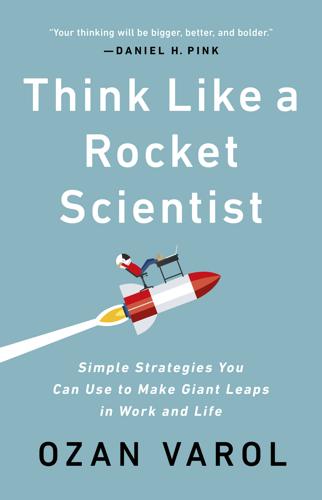
Think Like a Rocket Scientist: Simple Strategies You Can Use to Make Giant Leaps in Work and Life
by
Ozan Varol
Published 13 Apr 2020
“We sleep easy knowing that next year’s software will be better than this year’s,” Musk explains, but “rockets’ [cost] actually gets progressively worse every year.”2 Musk wasn’t the first to spot this trend. But he was among the first to do something about it. He launched SpaceX—short for Space Exploration Technologies—with the audacious goal of colonizing Mars and making humanity a multiplanetary species. But Musk’s deep pockets weren’t enough to buy rockets on the American or the Russian market. He pitched venture capitalists, but they were a hard bunch to convince. “Space is pretty far out of the comfort zone of just about every VC on Earth,” Musk explained.
…
If the company’s aim were to simply put satellites into Earth orbit, there would have been no reason to do things differently. The company would have relied on the same technology that NASA had been using since the 1960s. There’s little reason to reduce the cost of rocket launches by a factor of ten, as SpaceX is on its way to doing, unless you’re aiming for a moonshot. The bold ambition of colonizing Mars forced SpaceX to employ first-principles thinking and transform the status quo. The political strategists James Carville and Paul Begala tell a story about the choice a lion faces in deciding to hunt for a mouse or an antelope. “A lion is fully capable of capturing, killing, and eating a field mouse,” they explain.
…
Now, more than three decades later, Shotwell is at the top of the engineering game, responsible for the day-to-day operations of SpaceX. Among other things, she serves as “the bridge between Elon and the staff,” SpaceX’s Hans Koenigsmann says.75 “Elon says let’s go to Mars and she says, ‘OK, what do we need to actually get to Mars?’” To finance the company’s unconventional dream of colonizing Mars, Shotwell travels the globe, pursuing conventional opportunities for taking commercial payloads into orbit. While SpaceX was still in its infancy, she managed to win contracts worth billions of dollars from satellite operators. These contracts continue to pay the bills as SpaceX works toward its moonshot of taking humans to Mars.
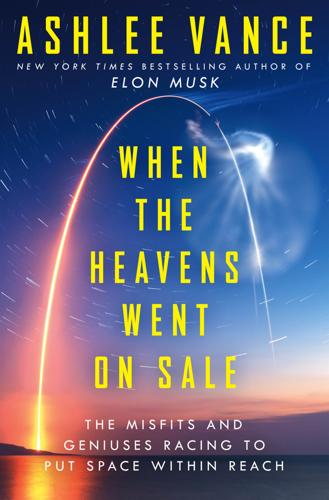
When the Heavens Went on Sale: The Misfits and Geniuses Racing to Put Space Within Reach
by
Ashlee Vance
Published 8 May 2023
In the popular press, the increase in private space activity has tended to focus on Musk and his peers, such as Jeff Bezos, Richard Branson, and the late Paul Allen of Microsoft. Those men have all funded ventures varying from rocket companies to space planes. The fascination largely revolves around billionaires who are hoping to fire up space tourism businesses or, like Musk, setting off to colonize the moon or Mars. What the public has paid less attention to is the frenetic amount of activity taking place among hundreds of other companies scattered all around the world who are building new types of rockets and satellites. These companies are locked in a race that feels more immediate and tangible than humans taking laps around the moon or doing their laundry on Mars.
…
As perhaps the highest-ranking space tech nerd in the military, Worden had encountered every “out there” pitch and wacko inventor imaginable, ranging from guys building ray guns in their garage to folks convinced that their flying saucer would be the next great military vehicle. But Worden identified Musk as legit and something of a kindred spirit. They both hoped that humans would one day colonize Mars and expand even farther into the universe, and they enjoyed batting theories back and forth on how to accomplish such things. “Elon was a visionary, and there were a lot of visionaries around at the time,” Worden said. “But there was something about him where I thought, ‘This is not a boloney artist.
…
Beck had purchased the fastest machines available and nearly broke me in two as he raced off with me sitting behind him.* During our day together, I tried my best to engage in small talk and then to get Beck to tell me what he really wanted out of being a space magnate. Musk’s life ambition is to colonize Mars. Did Beck have a secret, equally lofty goal? What was the point of all his work? But I never seemed to make any progress. Beck wanted to discuss the minutiae of the rocket business and the travails of his competitors. He made no mention of wanting to colonize anything or hunting for life in the outer reaches of space.
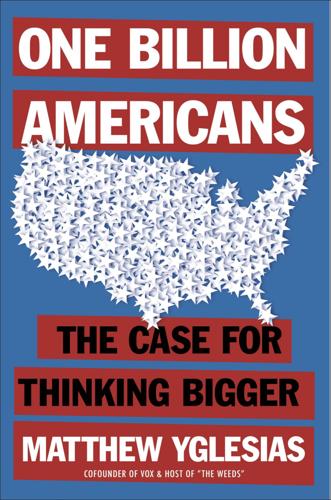
One Billion Americans: The Case for Thinking Bigger
by
Matthew Yglesias
Published 14 Sep 2020
Los Angeles alone has invested billions of dollars in recent years in constructing the Los Angeles Metro Rail system, which has less than a third of the ridership of smaller mass transit systems in much smaller cities like Budapest, Milan, Busan, Montreal, or Stockholm. Concurrently, major political stakeholders in American mass transit are relentlessly focused on the concept of innovation, with New York governor Andrew Cuomo announcing a flashy “genius” contest to improve transit. Elon Musk, when not colonizing Mars or trying to revolutionize the car industry, muses publicly about totally reworking American urban transportation. There’s something natural about this. The United States is bad at mass transit but good at innovation, so the idea that we need to apply some innovation to our transit problem has some appeal.
…
We can’t build a colony on Mars not because we “can’t pay for it” but because we literally lack the ability to do it. The government could, by spending huge sums of money, induce a large number of talented scientists and engineers to spend their time working on the problem. But that would be an enormous waste, not so much of money but of talented scientists and engineers. Colonizing Mars would be fun, but it’s not clear that it’s possible and it doesn’t seem to be important. We’re better off with technical experts working on building better smartphones, better batteries, better solar panels, better treatments for diseases, and solving other pressing social and commercial problems.
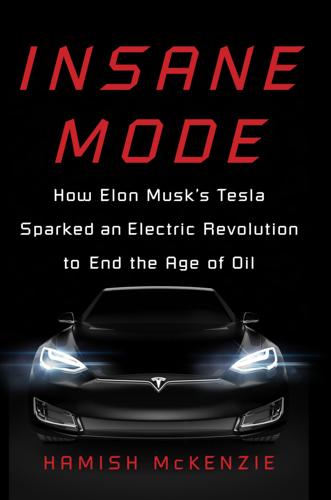
Insane Mode: How Elon Musk's Tesla Sparked an Electric Revolution to End the Age of Oil
by
Hamish McKenzie
Published 30 Sep 2017
* * * Musk has characterized his companies as moral missions as much as businesses. He didn’t start Tesla or SpaceX to make money, he has said, but because he believed the world needed them. The future for humans on Earth would be terrible if we didn’t switch to sustainable energy, and without electric cars, the peril from climate change would be unimaginable. His goal to colonize Mars is also motivated in part by a moral impulse. In the case of an extinction event, which could be brought on by anything from runaway climate change to rogue artificial intelligence, we’d all be homeless. “I think there is a strong humanitarian argument for making life multiplanetary,” he has said, “in order to safeguard the existence of humanity in the event that something catastrophic were to happen.”
…
Not only is he calling the shots at Tesla, but he’s also running SpaceX, a $20 billion enterprise with more than a few ambitions of its own, which include sending astronauts to the International Space Station, a space Internet subdivision, driving the development of cheap reusable rockets, and, ultimately, colonizing Mars. As if he were somehow bored by this trifling workload, Musk has also taken on a host of other side projects, such as Neuralink, a brain-computer interface start-up he cofounded, the Boring Company, which plans to make tunnels for cars, and the Hyperloop, another of his pet interests. Can he do it all?
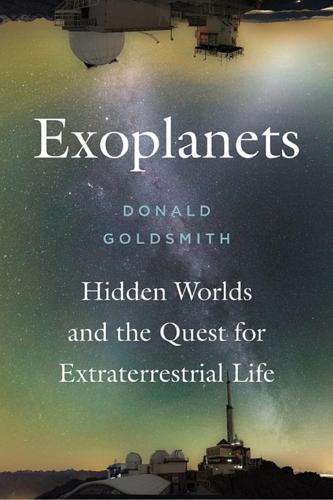
Exoplanets: Hidden Worlds and the Quest for Extraterrestrial Life
by
Donald Goldsmith
Published 9 Sep 2018
By that time we should have spread out into space, and to other stars, so a disaster on Earth would not mean the end of the human race.”17 Looking toward the comparatively near future, Hawking stated that if humanity hopes to avoid extinction, we must plan to become a multiplanet species within the next century, presumably by colonizing Mars.18 To this apocalyptic vision, the physicist Freeman Dyson offers a single word of judgment: “rubbish!”19 The author concurs in the view that if we cannot solve our problems here on Earth, outer space offers no likelier avenues to long-term success. Exoplanets’ hypothesized benefit as future abodes for humanity brings a more immediate boon: They allow us to plunge enjoyably into the deep end of the pool of speculation.
…
Peter Holley, “Stephen Hawking Just Gave Humanity a Due Date for Finding Another Planet,” Washington Post, November 17, 2016. 18. Sara Fecht, “Stephen Hawking Says We Have 100 Years to Colonize a New Planet—Or Die. Can We Do It?,” Popular Science, May 4, 2017, available at http://www.popsci.com/stephen-hawking-human-extinction-colonize-mars. 19. Freeman Dyson interview, May 8, 2017. FURTHER READING Batygin, Konstantin, Gregory Laughlin, and Alessandro Morbidelli. “Born of Chaos: New Evidence Suggests the Solar System’s Early Eras Were Defined by Wandering Worlds and Staggering Displays of Interplanetary Destruction.” Scientific American 314, no. 5 (May 2016): 28–37.

Battle for the Bird: Jack Dorsey, Elon Musk, and the $44 Billion Fight for Twitter's Soul
by
Kurt Wagner
Published 20 Feb 2024
It was an idea inspired (in part) by the fear that something, someday might happen to Earth that would force humans to live on another planet. So Musk moved to Los Angeles, and around the same time that PayPal sold to eBay, he started Space Exploration Technologies, known as “SpaceX,” with his own money. He hoped the commercial space venture would not only build rockets, but eventually colonize Mars. Two years later Musk invested another $6.5 million of his money into another company called Tesla, which was working on an electric car to help solve a different but similarly grandiose problem: that humanity was too dependent on fossil fuels. Musk was immediately the company’s largest shareholder, became its chairman, and by 2008 was also the CEO.
…
In 2016 he founded Neuralink, a company building “brain-computer interfaces”—implantable brain chips that use brain activity to control the output on a computer or a phone. He also launched The Boring Company, a business that was “sort of a hobby company” focused on building tunnels underground for high-speed travel. He continued to speak regularly about colonizing Mars, and unironically threw out the idea of creating artificial suns by constantly setting off thermonuclear explosions in outer space. Musk was even doing his part to save the world from another looming crisis: population collapse. “If people don’t have more children, civilization is going to crumble.
…
It wasn’t just the Babylon Bee, Musk said, but more of a feeling that had been growing for some time. “We are traveling the path more and more of suppression of free speech. And this was just getting me concerned,” he said. Perhaps unsurprisingly, his motivation was similar to why he also wanted to colonize Mars. “My biological neural net concluded that it was important to buy Twitter, and that if Twitter was not bought and steered in a good direction that it would be a danger for the future of civilization.” Musk acknowledged that bringing free speech back to the masses didn’t come without consequences, and he suggested that doing so could even get him killed.

The Buddha and the Badass: The Secret Spiritual Art of Succeeding at Work
by
Vishen Lakhiani
Published 14 Sep 2020
Your MTP is the massive change you want to bring to the world to make it better off. In some business books this is referred to as the BHAG (pronounced B-HAG), or “Big Hairy Audacious Goal.” I consider these the same thing. Your MTP is an overriding, empowering goal that your organization is pushing for. Elon Musk’s MTP is to colonize Mars. Bill Gates’s MTP back when Microsoft started was to put a computer on every desk in the world. Google’s MTP is to organize the world’s information and make it universally accessible and useful. Mindvalley’s MTP is to create the greatest rise in human consciousness our species has ever experienced.
…
But by thinking bold and speaking of the future as if it’s inevitable you move faster than if you choose to play small and be stuck in the present. The takeaway? Speak not of what you’re doing now, but what you plan to do. Remember, when explaining SpaceX Elon Musk spoke about his future plans of colonizing Mars even though they were a decade or more ahead. This ability to speak boldly and envision the future helped him attract the best minds on the planet to figure out the how for him. To effectively articulate your ten-years-ahead vision, you need to play a little mental game and ask yourself: “If I magnify my company a thousand times, what would it look like?”

Elon Musk
by
Walter Isaacson
Published 11 Sep 2023
He went to the Palo Alto public library to read about rocket engineering and started calling experts, asking to borrow their old engine manuals. At a gathering of PayPal alumni in Las Vegas, he sat in a cabana by the pool reading a tattered manual for a Russian rocket engine. When one of the alums, Mark Woolway, asked him what he planned to do next, Musk answered, “I’m going to colonize Mars. My mission in life is to make mankind a multiplanetary civilization.” Woolway’s reaction was unsurprising. “Dude, you’re bananas.” Reid Hoffman, another PayPal veteran, had a similar reaction. After listening to Musk describe his plan to send rockets to Mars, Hoffman was puzzled. “How is this a business?”
…
It came from his heritage in a family of adventurers and his decision as a teenager to move to a country that had bred into its essence the spirit of pioneers. “The United States is literally a distillation of the human spirit of exploration,” he says. “This is a land of adventurers.” That spirit needed to be rekindled in America, he felt, and the best way to do that would be to embark on a mission to colonize Mars. “To have a base on Mars would be incredibly difficult, and people will probably die along the way, just as happened in the settling of the United States. But it will be incredibly inspiring, and we must have inspiring things in the world.” Life cannot be merely about solving problems, he felt.
…
Mueller picked “Merlin” for the engines on the first stage and “Kestrel” for those on the second stage. 18 Musk’s Rules for Rocket-Building SpaceX, 2002–2003 Test stand in McGregor, Texas Question every cost Musk was laser-focused on keeping down costs. It was not simply because his own money was on the line, though that was a factor. It was also because cost-effectiveness was critical for his ultimate goal, which was to colonize Mars. He challenged the prices that aerospace suppliers charged for components, which were usually ten times higher than similar parts in the auto industry. His focus on cost, as well as his natural controlling instincts, led him to want to manufacture as many components as possible in-house, rather than buy them from suppliers, which was then the standard practice in the rocket and car industries.

Test Gods: Virgin Galactic and the Making of a Modern Astronaut
by
Nicholas Schmidle
Published 3 May 2021
By comparison, what is called “low Earth orbit” starts at 100 miles above sea level; the International Space Station orbits at an average of 150 miles above that; GPS satellites, which operate in “medium” Earth orbit, are about 13,000 miles away. Blue Origin shared Virgin’s suborbital altitude goal for its initial crewed flights but was intent on exploring deep space, too. SpaceX was arguably the most ambitious: Musk wanted to colonize Mars, a minimum of thirty-four million miles away. But perhaps the most striking distinction boiled down to their belief in the human mind. Blue Origin and SpaceX were run by tech wizards, algorithmic geniuses who trusted in mathematical power to eliminate human error, to one day render fallibility obsolete.
…
Soon after, a prospective buyer came around to the test site. The buyer was fond of wearing a black leather trench coat, displaying the fashion sense of what his biographer called a “high-paid assassin”; had a lot of money from recently selling his online payments company, PayPal; and was now forming a rocket company so he could colonize Mars. His name was Elon Musk. Musk’s early efforts were also fraught. Rockets failed to light. He once burned down a test stand. The noise from tests sent cow herds around Waco into frenzied stampedes. Later he nearly burned down an island in the South Pacific when a SpaceX rocket lifted off, caught fire, turned, and came screaming back to earth.

The Undertow: Scenes From a Slow Civil War
by
Jeff Sharlet
Published 21 Mar 2023
I suggested a few notable items. James dismissed each as derivative, wan commentary on an age of American genius a hundred years gone. Except, he said, for Elon Musk. I didn’t argue. I never do, with the well-armed. “He wants to colonize Mars,” said James, pulling from within himself a skein of hope for his nine children’s seven children. A mission to colonize Mars, James let himself hope, would make us great again. It’d be like the Old West, like our forefathers. A chance to be men with guns again—as, despite the fact that he and most he knew were armed, he thought “we” no longer are. “What has destroyed every great civilization?”
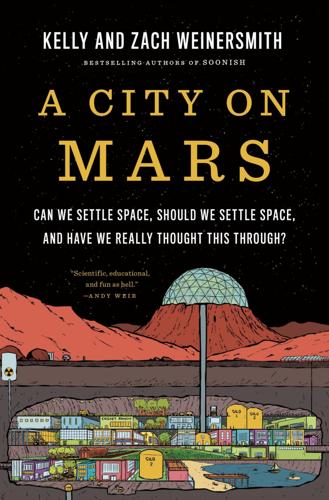
A City on Mars: Can We Settle Space, Should We Settle Space, and Have We Really Thought This Through?
by
Kelly Weinersmith
and
Zach Weinersmith
Published 6 Nov 2023
Boston: Quinlan Press, 1988. Schmidt, Stanley, and Robert Zubrin, eds. Islands in the Sky: Bold New Ideas for Colonizing Space. New York: Wiley, 1996. Schulte-Ladbeck, Dr. Regina E. Basics of Spaceflight for Space Exploration, Space Commercialization, and Space Colonization. Np: RESLscience, 2016. Schuster, Haley, and Steven L. Peck. “Mars Ain’t the Kind of Place to Raise Your Kid: Ethical Implications of Pregnancy on Missions to Colonize Other Planets.” Life Sciences, Society and Policy 12 (2016): 10. https://doi.org/10.1186/s40504-016-0043-5. Schwartz, James S. J. “Myth-Free Space Advocacy Part I—The Myth of Innate Exploratory and Migratory Urges.”
…
“During the Long Way to Mars: Effects of 520 Days of Confinement (Mars500) on the Assessment of Affective Stimuli and Stage Alteration in Mood and Plasma Hormone Levels.” PLoS ONE 9 (2014). https://doi.org/10.1371/journal.pone.0087087. Wanjek, Christopher. Spacefarers: How Humans Will Settle the Moon, Mars, and Beyond. Cambridge, MA: Harvard University Press, 2020. Wattles, Jackie. “Colonizing Mars Could Be Dangerous and Ridiculously Expensive. Elon Musk Wants to Do It Anyway.” CNN, September 8, 2020. https://www.cnn.com/2020/09/08/tech/spacex-mars-profit-scn/index.html. Weeden, Brian, and Victoria Samson, eds. Global Counterspace Capabilities: An Open Source Assessment. Broomfield, CO: Secure World Foundation, 2022. https://swfound.org/media/207344/swf_global_counterspace_capabilities_2022.pdf.
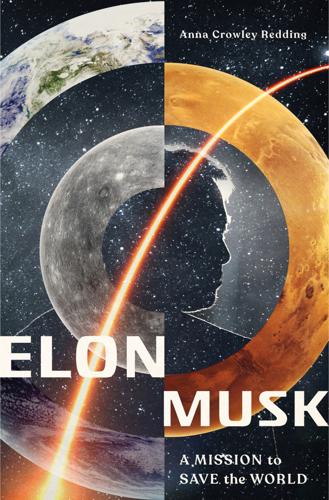
Elon Musk: A Mission to Save the World
by
Anna Crowley Redding
Published 1 Jul 2019
A problem that has weighed on his mind for years. In 2001, as he began contemplating what to do with his time, he kept thinking about this problem in particular. The more Elon thought about it and studied it, the more convinced he became that there was only one solution: Humans needed to colonize other planets. And they should start with Mars. Image of Mars taken by the Hubble Space Telescope on June 6, 2001. (Photo by NASA and the Hubble Heritage Team [STScI/AURA].) “If we were a multi-planetary species, that would reduce the possibility of some single event, man-made or natural, taking out civilization as we know it, as it did the dinosaurs,” Elon said in an interview with Rolling Stone.
…
Writing a check for five grand, Elon attended a fund-raiser for the Mars Society, where he met other space fans and sought out as much information as he could. He broke down the humans-stuck-on-Earth issue into smaller problems to solve. At the top of the list: getting the public’s support. As his reading, research, and connections began to coalesce, he formed a plan. MARS SOCIETY: This nonprofit organization is committed to exploring and colonizing Mars. It was founded in 1998 by Dr. Robert Zubrin, who has a master’s degree in aeronautics and astronautics and a doctorate in nuclear engineering. “I came up with this idea to do so-called Mars oasis, which was to send a small greenhouse with seeds in dehydrated gel that upon landing, you hydrate the gel.

This Is Not a Drill: An Extinction Rebellion Handbook
by
Extinction Rebellion
Published 12 Jun 2019
Or making guards wear disciplinary collars of some kind in return for their survival. Or maybe building robots to serve as guards and workers – if that technology could be developed in time. That’s when it hit me: at least as far as these gentlemen were concerned, this was a talk about the future of technology. Taking their cue from Elon Musk colonizing Mars, Peter Thiel reversing the ageing process, or Sam Altman and Ray Kurzweil uploading their minds into supercomputers, they were preparing for a digital future that had a whole lot less to do with making the world a better place than it did with transcending the human condition altogether and insulating themselves from the very real and present danger of climate change, rising sea levels, mass migrations, global pandemics, nativist panic and resource depletion.
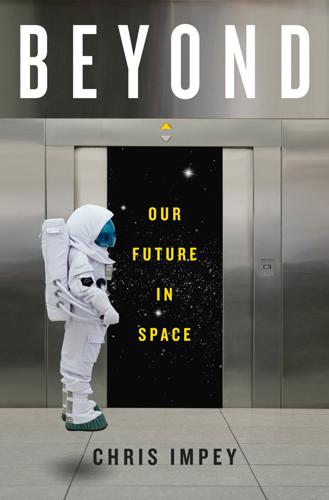
Beyond: Our Future in Space
by
Chris Impey
Published 12 Apr 2015
Humans are the only species that moves systematically and purposefully over very large distances, in multigenerational migrations, for reasons not tied to the availability of resources. The itch that led our ancestors to risk everything to travel in small boats across large bodies of water like the Pacific Ocean is related to the drive that will one day lead us to colonize Mars. Its origins lie in a mixture of culture and genetics. Behavioral psychologist Alison Gopnik has observed that humans are unique in the way they connect play and imagination. Mammal species can be playful when they’re young, but the play is quickly channeled into practicing skills such as hunting and fighting, which are needed as an adult.
…
The people who leave Earth won’t be taking land from anyone.16 Eventually, they’ll have to make everything they need to survive and prosper. They will create their own wealth. It will be hard to hold them to any Earth-centric legal framework if they want to be independent. Colonization implies replacement and growth. A Mars colony can be augmented by new arrivals, but a healthy, normal culture centers on the family unit. There will be sex and there will be babies. Sex in space hasn’t progressed beyond snickering and titillation. It’s the stuff of urban, orbital legend. Every couple of years, NASA and its Russian counterpart wearily deny that astronauts have had sex.

The Optimist: Sam Altman, OpenAI, and the Race to Invent the Future
by
Keach Hagey
Published 19 May 2025
When the two settled down for lunch in the company cafeteria, they had a cosmic conversation. Hassabis told Musk he was working on the most important thing in the world, a superintelligent AI. Musk responded that he, in fact, was working on the most important thing in the world: turning humans into an interplanetary species by colonizing Mars. Hassabis responded that that sounded great, so long as a rogue AI did not follow Musk to Mars and destroy humanity there too. Musk got very quiet. He had never really thought about that. He decided to keep tabs on DeepMind’s technology by investing in it.29 IN DECEMBER 2013, Hassabis stood on stage at a machine learning conference at Harrah’s in Lake Tahoe and demonstrated DeepMind’s first big breakthrough: an AI agent that could learn to play and then quickly master the classic Atari video game Breakout without any instruction from humans.
…
Alexander), 165–66 Meena the chatbot, 270 Memamp desktop search company, 76 Mendelsohn, Matt, 45 Metro (UK newspaper), 242 Metz, Cade, 145–46, 199 MGX investment fund, 310 Microsoft in the AI arms race, 270 Azure cloud, 216, 237, 272 and the Biden campaign, 296 Bill and Melinda Gates Foundation, 303 Bing search engine, 216, 271 during the “blip” and beyond, 277, 279–80, 282–83, 288–89, 293–94, 303–4, 310, 313 Edge web browser, 272 GitHub Copilot on Visual Studio, 262 HyperCard, 209 Inflection AI acquisition, 277 Internet Explorer web browser, 272 LinkedIn acquisition, 234 OpenAI’s relationship with, 2, 11, 13, 216–17, 226, 229–30, 234–35, 237, 245, 271–72, 303–4, 310, 313 QBasic language, 56 regulation of AI, 299–300 Tay the chatbot, 270 valuation of, 298 Visual Basic language, 56 Millennials, 4, 137, 205 Milner, Yuri, 138, 199 mimetic theory, 131 Minsky, Marvin, 142, 210 MIT (Massachusetts Institute of Technology), 63, 64, 92, 124, 160, 175, 178, 212 MIT Technology Review, 258–59, 269 Mithril Capital, 136 mobile phones enter the iPhone, 110–16, 118, 119 global positioning system (GPS) chips in, 57–58, 99 location-based services, 58–59, 106–7, 118–19 phone makers as the serfs of the mobile industry, 110 proprietary software on, 79 wireless carriers, 58–59, 75, 79, 90, 98, 100–9, 110, 118, 120, 159 mobile virtual network operator (MVNO), 99 Modi, Narendra, 14, 274, 275 Moloch (a god), 165–66 Monongahela Valley of Pennsylvania (Mon Valley), 30, 40 moonshots, 13, 16, 136, 194 Moore, Demi, 138 “Moore’s Law for Everything” (Altman), 255 More, Max, 141 Morehead-Cain Scholarship at the University of North Carolina at Chapel Hill, 53 Moritz, Michael, 16, 87–89, 112–13, 117, 186, 206 Morris, Robert Tappan, 63, 68, 74 Moscone Center West in San Francisco, 115 Moskovitz, Dustin, 212–13, 259, 300 Mountain View, CA, 85, 94, 107, 122, 133, 139, 149, 161, 172, 182, 235 “moving fast and breaking things,” 237 Mozilla Foundation, 63, 233–35 Mulherin, Oliver, 275, 288, 295, 311 Murati, Mira, 225–26, 242–43, 246–48, 268, 282–93, 304–5, 307–8 Musk, Elon, 2, 5 as an AI doomer, 2, 5, 163, 167–72, 214–15, 273–74 children fathered by, 277 colonization of Mars, 144, 147, 170–71 DeepMind investment, 147 departing OpenAI, 216–17, 221–24, 229, 234–36, 277, 304 fighting aging, 257 Halcyon Molecular, 257–59 lawsuit against OpenAI, 14–15, 304, 313 Neuralink, 193, 234 at OpenAI’s founding and beyond, 170–72, 183, 185–88, 192–94, 198, 213–14, 216–17, 221–24 in politics, 207, 313 relationship with Sam Altman, 16, 147, 170–72, 183, 194, 214–15 SpaceX, 147, 153, 167, 170–71, 187, 194 Tesla, 153, 167, 194, 223–26, 234, 255 Twitter, 118, 158, 169, 246–47, 261, 270, 281 X.com originally, 125 xAI, 15, 277, 310 MyMobileMenu (MMM) food ordering system, 75 MySpace, 103, 116 Nadella, Satya, 216, 229–30, 237, 271–72, 273, 288–89, 293–94 Nakamoto, Satoshi, 142 nanotechnology, 144, 164 Napa Valley, 185, 190, 260 NASA, 132–33 NASDAQ, 97 Nathoo, Kirsty, 139 National Center for Missing & Exploited Children, 98 National Institute of Standards and Technology (NIST), 299, 301 National Security Council, 299, 301 “natively multimodal,” 307 natural language processing, 174 Nature (journal), 148, 192 Nawrocki, Bob, 25–26 NBC Universal, 229 Nectome, 258 Neom, a megacity in Saudi Arabia, 231–32 Netflix, 204, 229 Neuman, John von, 140 neural networks, 147, 164, 176, 179–82, 190–93, 219, 221, 243, 314 Neuralink, 193, 234 NeurIPS (Conference on Neural Information Processing Systems), 178, 186, 305 neuroscience, 145–48, 202 New Enterprise Associates (NEA), 61–62, 74–75, 77, 80–81, 85–86, 89, 91, 92, 117, 121 New Hampshire, 297 New York (magazine), 134, 250, 261–62, 281 New York City, 10, 29–30, 43, 67, 86, 101–2 New York Stock Exchange, 163 New York Times Magazine, The, 139 New York Times, The, 29, 63, 132, 163, 217, 244, 270, 286, 288, 308, 312–13 New Yorker, The (magazine), 49, 81, 128, 152–54, 160, 165, 201–2, 259–60 New Zealand, 145, 171 Newhouse, Steve, 162 News Corp, 307 “newscasters,” 73 Newsom, Gavin, 205, 309 Newton, Thandiwe, 199 Nextel, 58, 99, 105–6 1910 Genetics, 250 Ng, Andrew, 57, 90, 170, 266 Nicholls, GA, 23 Nobel Prizes in Physics, 219, 312 Noerper, Thelma, 25 Nolan, Jonathan, 199 nonprofit structure of OpenAI, 4–5, 14–16, 28, 172, 184–87, 198, 222–23, 233–34, 236, 266, 275 Nosek, Luke, 147 nuclear energy, 12–13, 57, 108, 134–36, 154, 177, 205, 230, 259, 280 nuclear weapons, 27n, 168, 213 nude celebrity photos leaked by hackers, 162 Nwankwo, Jen, 250 o1 (“Strawberry”), 284, 309 Oakland, CA, 195 Obama, Barack, 21, 172, 207–8, 266 Ohanian, Alexis, 69–70, 75, 81, 162 Oklo fission microreactor startup, 13, 137, 280 Olah, Chris, 178, 184 1billionmasks.com, 250 O’Neill, Megan, 28–29 “On the Dangers of Stochastic Parrots: Can Language Models Be Too Big?”
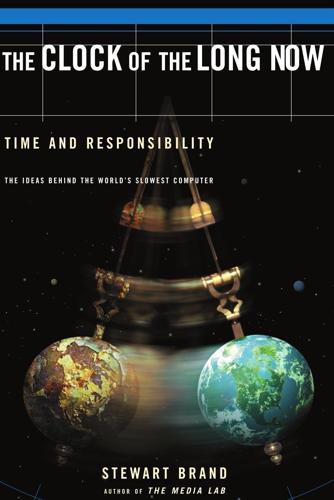
Clock of the Long Now
by
Stewart Brand
Published 1 Jan 1999
It is the job of slow-but-steady governance and culture to set the goals of solving these problems and to maintain the constancy and patience required to see them through (that is not our current model of governance). Restorative goals such as these are the most important, but they do have a negative cast. Could their accomplishment be aided by also engaging some positive goals that operate at the same pace? Colonizing Mars has this quality. Building a 10,000-Year Clock/Library might. Assembling a universal virtual-reality world on the Net feels like an achievable great work. Success in mapping the human genome should encourage the related ambition of inventorying all the species on Earth and mapping their genomes.

Same as Ever: A Guide to What Never Changes
by
Morgan Housel
Published 7 Nov 2023
An utter maniac. The kind of person who thinks normal constraints don’t apply to them—not in an egotistical way, but in a genuine, believe-it-in-your-bones way. Which is also the kind of person who doesn’t worry about, say, Twitter etiquette. A mindset that can dump a personal fortune into colonizing Mars is not the kind of mindset that worries about the downsides of hyperbole. And the kind of person who proposes making Mars habitable by constantly dropping nuclear bombs in its atmosphere is not the kind of person worried about overstepping the boundaries of reality. The kind of person who says there’s a 99.9999 percent chance humanity is a computer simulation is not the kind of person worried about making untenable promises to shareholders.

World Without Mind: The Existential Threat of Big Tech
by
Franklin Foer
Published 31 Aug 2017
The alphabet was one of humanity’s greatest innovations, the sort of everlasting achievement that the company intends to foment again and again. Bluster pours forth from the tech elite, and much of the world tends to look at their lengthy inventory of grandiose projects as vanity. If Jeff Bezos wants to launch rockets into space, then Elon Musk will do him one better and colonize Mars. But Silicon Valley is hardly distinguished by the hegemonic egos of its leaders, especially relative to finance or media. What makes Big Tech different is that it pursues these projects with a theological sense of conviction—which makes its efforts both wondrous and dangerous. At the epicenter of Google’s bulging portfolio is one master project: The company wants to create machines that replicate the human brain, and then advance beyond.

A History of the World in 6 Glasses
by
Tom Standage
Published 1 Jan 2005
The inhabitants of a Mars colony will need water to drink and wash, to grow crops, and to convert into rocket fuel, which can be made by splitting water into its component elements, hydrogen and oxygen. This, together with the search for extraterrestrial life (which is also assumed to depend on water), explains why so much effort is being put into locating and understanding the distribution of water on other bodies in the solar system. Some scientists even believe that colonizing Mars is necessary to ensure the continued survival of humanity. Only by becoming a "multiplanetary species," they argue, can we truly guard against the possibility of being wiped out by war, disease, or a mass extinction caused by an asteroid or comet crashing into the Earth. But that will depend on finding supplies of water on other worlds.

If Anyone Builds It, Everyone Dies: Why Superhuman AI Would Kill Us All
by
Eliezer Yudkowsky
and
Nate Soares
Published 15 Sep 2025
It’d still be inconvenient for a machine superintelligence to discard 0.2 percent of the planetary mass in its home star system, resources that it could use to send probes out to colonize the Milky Way with its factories. Earth is where the AI starts; it’s the most convenient planet to use up first. But, you might ask, if the internal preferences that get into machine intelligences are so unpredictable, how could we possibly predict they’ll want the whole solar system, or stars beyond? Why wouldn’t they just colonize Mars and then stop? Because there’s probably at least one preference the AI has that it can satisfy a little better, or a little more reliably, if one more gram of matter or one more joule of energy is put toward the task. Human beings do have some preferences that are easy for most of us to satisfy fully, like wanting enough oxygen to breathe.

Physics of the Future: How Science Will Shape Human Destiny and Our Daily Lives by the Year 2100
by
Michio Kaku
Published 15 Mar 2011
Solar satellites by themselves might be able to heat the Martian surface above freezing. Once this happens and the permafrost begins to melt, the planet would naturally continue to warm on its own. ECONOMIC BENEFIT? One should have no illusions that we will benefit immediately from an economic bonanza by colonizing the moon and Mars. When Columbus sailed to the New World in 1492, he opened the door to a historic economic windfall. Soon, the conquistadors were sending back huge quantities of gold that they plundered from Native Americans, and settlers were sending valuable raw materials and crops back to the Old World.
…
However, once we make the transition to a Type I civilization, we will have many centuries to settle our differences. As we saw in earlier chapters, space colonies will continue to be extremely expensive into the future, so it is unlikely that a significant fraction of the world’s population will leave to colonize Mars or the asteroid belt. Until radically new rocket designs bring down the cost or until the space elevator is built, space travel will continue to be the province of governments and the wealthy. For the majority of the earth’s population, this means that they will remain on the planet as we attain Type I status.

Boom: Bubbles and the End of Stagnation
by
Byrne Hobart
and
Tobias Huber
Published 29 Oct 2024
This is what the current moment is missing, and what we hope to reestablish with this book. While our diagnosis of stagnation and decline might appear pessimistic, this book’s assertion of agency is ultimately a positive one. Even when humans have achieved artificial general intelligence, escaped the limits of mortality, solved nuclear fusion, and colonized Mars, it will remain a moral imperative to warn about the civilizational dangers of stagnation and look past the present to construct a future that is radically better. We’ve written this book to develop, in a sense of exigency, a deeper understanding of the dynamics that govern technological innovation.

The Future Is Faster Than You Think: How Converging Technologies Are Transforming Business, Industries, and Our Lives
by
Peter H. Diamandis
and
Steven Kotler
Published 28 Jan 2020
“The Earth is the gem”: Loren Grush, “Jeff Bezos: ‘I Don’t Want a Plan B for Earth,’ ” Verge, June 1, 2016. See: https://www.theverge.com/2016/6/1/11830206/jeff-bezos-blue-origin-save-earth-code-conference-interview. Elon Musk doesn’t disagree: Dave Mosher, “Here’s Elon Musk’s Complete, Sweeping Vision on Colonizing Mars to Save Humanity,” Business Insider, September 29, 2016. See: https://www.businessinsider.com/elon-musk-mars-speech-transcript-2016-9. “Mars Oasis”: Chris Anderson, “Elon Musk’s Mission to Mars,” Wired, September 21, 2012. See: https://www.wired.com/2012/10/ff-elon-musk-qa/. Musk founded SpaceX in 2002: Michael Sheetz, “The Rise of Spacex and the Future Of Elon Musk’s Mars Dream,” CNBC, March 20, 2019.
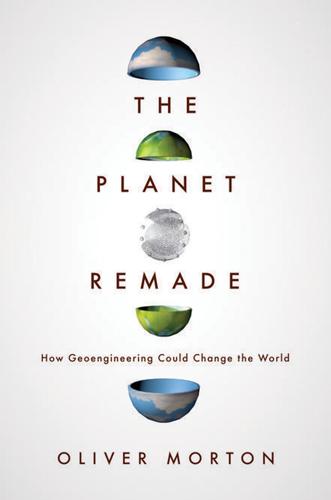
The Planet Remade: How Geoengineering Could Change the World
by
Oliver Morton
Published 26 Sep 2015
But as someone writing about science at the time, and with a pretty high tolerance – to be honest, appetite – for the far out, I found that throughout the 1990s I was able to abuse the generosity of various editors to get to scientific meetings on subjects quite as far out as geoengineering: the threat which asteroids posed to the Earth, and techniques for reducing it; the challenge of interstellar, as opposed to merely interplanetary, space missions; the possibility of colonizing Mars. Indeed, there were even meetings on ways in which, subsequent to such colonization, the Martian climate might be engineered to human advantage, using tailored aerosols and greenhouse gases to warm and thicken the atmosphere to the point where water might flow. Such ‘terraforming’ owes an obvious debt to Lowell – except that where Lowell saw Martians solemnly trying to postpone their planet’s inevitable demise, the terraformers were imagining ways to bring a dead-already world to life.
…
Ideas about the terraforming of Mars made the cover of the prestigious journal Nature in 1992 – but from 1991 to 2001 it published not a single scientific article mentioning climate geoengineering. What distinguished geoengineering from those other ideas was that it had to do with something that actually mattered. There were no asteroids on impact courses that the Earth needed to worry about, and no planets around alien stars with a pressing need for probing. The colonization and terraforming of Mars could wait for another day, or decade, or century. But from the late 1980s on there was widespread agreement that the climate had already changed, and that the risks posed by further change needed addressing forthwith. This sense of urgency, rather than encouraging a debate on geoengineering, suppressed it.

The Internet Is Not the Answer
by
Andrew Keen
Published 5 Jan 2015
Apple, a company that has been accused of cheating the US government out of $44 billion in tax revenue between 2009 and 2012,82 is building a Norman Foster–designed $5 billion Silicon Valley headquarters that will feature a 2.8-million-square-foot circular, four-story building containing a 1,000-seat auditorium, a 3,000-seat café, and office space for 13,000 employees.83 Before he died, Steve Jobs described Foster’s design for the new building as looking a “little like a spaceship.” Elon Musk should take note. After all, what’s the point of colonizing Mars when Martian architecture is already colonizing the Bay Area? And then there’s “the largest open office space in the world,”84 which Mark Zuckerberg has hired Frank Gehry to build for Facebook’s 3,400 employees. Zuckerberg’s new office resembles Facebook itself: an intensely opaque, secretive company that has built its multibillion-dollar brand upon the lies of transparency and openness.
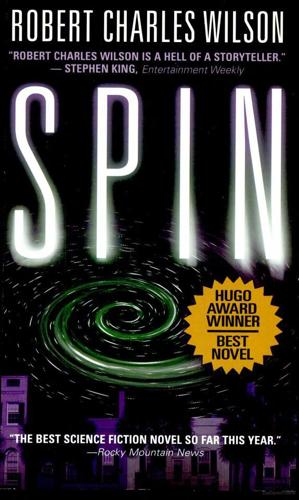
Spin
by
Robert Charles Wilson
Published 2 Jan 2005
Words that would have made only fairy-tale sense in their childhood ("two men walked on the moon tonight") were being offered as statements of fact. And they couldn't accept it. It confounded their sense of what was reasonable and what was absurd. Now it was my turn. We're going to terraform and colonize Mars, said my friend Jason, and he wasn't delusional… or at least no more delusional than the dozens of smart and powerful people who apparently shared his conviction. So the proposition was serious; it must already have been, at some bureaucratic level, a work in progress. I took a walk around the grounds after dinner while there was still a little daylight.
…
Tuckman left the office mollified, clutching the script in her hand like a sacred scroll. I felt useless and vaguely fraudulent. But Mrs. Tuckman's condition was far from unique. The whole world was reeling with anxiety. What had once looked like our best shot at a survivable future, the terraforming and colonization of Mars, had ended in impotence and uncertainty. Which left us no future but the Spin. The global economy had begun to oscillate, consumers and nations accumulating debt loads they expected never to have to repay, while creditors hoarded funds and interest rates spiked. Extreme religiosity and brutal criminality had increased in tandem, at home and abroad.

Stealing Fire: How Silicon Valley, the Navy SEALs, and Maverick Scientists Are Revolutionizing the Way We Live and Work
by
Steven Kotler
and
Jamie Wheal
Published 21 Feb 2017
Hsieh has taken ideas pioneered at Burning Man and is attempting to reinvent the culture of a Fortune 500 company and to reinvigorate (to the tune of $350 million) a blighted urban core. That’s structural change in the real world, with all the risks and complications it entails. Musk’s projects too, aren’t without their complications. But reinventing transportation and pioneering a new energy grid (to say nothing of his efforts to colonize Mars) are wicked enough problems that they’ve stymied all prior efforts to solve them. What these examples make clear is that the perspective provided by nonordinary consciousness and culture offers a different path forward—a way to reconsider intractable challenges with fresh eyes. All of these practical applications have, in turn, inspired the Burning Man organization itself.
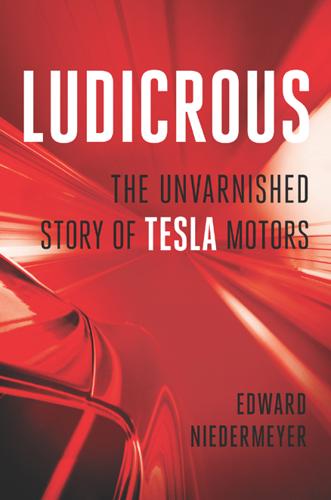
Ludicrous: The Unvarnished Story of Tesla Motors
by
Edward Niedermeyer
Published 14 Sep 2019
Yet after successfully selling two startups (Zip2, which created online listings for local businesses, and X.com, an “online bank” that eventually merged with Confinity to become PayPal) and walking away from the internet boom with tens of millions of dollars, Musk’s first major move was to start a rocket company called SpaceX, with which he hoped to someday colonize Mars. His only large automotive investment prior to Tesla was in purchasing a McLaren F1, a V12 hypercar that was among the fastest and most expensive cars in the world. “It’s a million-dollar car,” his first wife, Justine, told a CNN documentary crew on hand to film the delivery in 1999. “It’s decadent . . . my fear is that we lose a sense of appreciation and perspective.”

The Man Who Broke Capitalism: How Jack Welch Gutted the Heartland and Crushed the Soul of Corporate America—and How to Undo His Legacy
by
David Gelles
Published 30 May 2022
With much of the world stuck at home, online shopping was booming, and Amazon brought on more than 100,000 workers to meet the surging demand. Amazon’s stock price practically doubled in 2020, and founder Jeff Bezos became the first person in history to be worth $200 billion, using his money, in part, to pursue his dream of colonizing Mars via a base on the moon. On a single day, his net worth increased by $13 billion. But Amazon, one of the world’s most valuable companies, would not be sharing much of its record profits with its new “team members.” The starting salary for most of those entry-level jobs was $15 an hour, a figure that, while higher than the federal minimum wage, was not enough to live comfortably on in most American cities.

May Contain Lies: How Stories, Statistics, and Studies Exploit Our Biases—And What We Can Do About It
by
Alex Edmans
Published 13 May 2024
Whenever we listen to an expert’s opinion on whether to invest in crypto, how to teach our kids to read, or why inflation is so high, we’re hearing about research. And information is far broader than research – our news feeds are bombarded not only with ‘New study finds that . . .’ but also anecdotes like ‘How daily journalling boosted my mental health’, hunches such as ‘Five tips to ace your job interview’, and speculation like ‘Why we’ll colonize Mars by 2050’.10 Blindly following this advice, you could find yourself sicker, poorer and unemployed. In some cases, misinformation can be fatal. In March 2020, as the coronavirus pandemic was breaking out, US President Donald Trump tweeted that hydroxychloroquine might be a cure, proclaiming it ‘one of the biggest game changers in the history of medicine’.
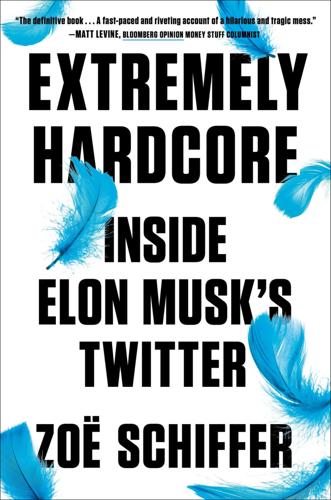
Extremely Hardcore: Inside Elon Musk's Twitter
by
Zoë Schiffer
Published 13 Feb 2024
But it also made him even richer. In 2002 the company was acquired by eBay for $1.5 billion in stock—with Musk, its largest shareholder, netting between $160 million and $180 million. Musk put that money into an even more challenging idea: spaceflight. More specifically, he believed that human beings should colonize Mars. He would start with rockets, picking up the work that NASA was no longer funding with the imagination it had in his youth. Lucrative government contracts were there for the taking. Eventually, Musk planned to make those rockets reusable—a feat never accomplished by any space program. Though the dream of X never died, it was easy to move on after his ousting.
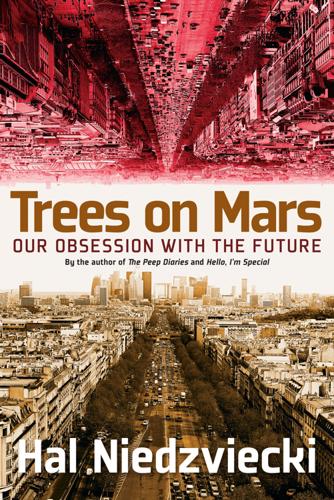
Trees on Mars: Our Obsession With the Future
by
Hal Niedzviecki
Published 15 Mar 2015
, a planet where everything from drinking water to seeds and soil will have to be carted from home, a planet we can send people to, but can’t bring them back from. Christy tells me about her motivations. First off, is, of course, the chance to go into space. Ever since Christy met Canadian astronaut Roberta Bondar in grade school, she’s dreamed of being an astronaut. “In my elementary school year book, I said I wanted to colonize the moon. That’s not going to happen, but Mars will be just fine.” But beyond the personal fulfillment of her dreams, what good will the trip do for the world at large? Christy talks about the insurance policy element of the plan. If things don’t work out on Earth, at least there will be people off planet to carry on the species.
…
And that’s to believe in bringing our quest for future to its conclusion by actually reaching the promised end-of-future. Call it the Trees-on-Mars option. Mars is just one of many symbolic stand-ins. It’s a metaphor for the singular moment of arrival when we all will live happily (for)ever after—on colonized Mars, or downloaded into computers, or even on an Earth transformed by platoons of robot servants who do all the work, anticipate our every need and are powered by rechargeable solar batteries. Mars and its many incarnations are the pop/consumer spectacle merging with the forever promise of techno-science that now dominates how we think about the world around us.

Nervous States: Democracy and the Decline of Reason
by
William Davies
Published 26 Feb 2019
There will be ultraprivileged elites who seek (and largely manage) to hoard the resources and benefits of scientific progress, in the form of greater protection from natural disasters, insulation from political upheavals and longer, healthier lives. The new generation of Napoleonic high-tech entrepreneurs may attain their dreams of living to 150 or 200 or longer. These ‘founders’ may build empires that outlive them. Some may manage to colonize Mars, as Elon Musk insists they must. If this is the future of progress, then it cannot be something that includes most people, and much of its impetus is to escape the fate that awaits the rest of us. Libertarian dreams ultimately mean divorcing scientific from social progress. What does hope look like, once divested of some constantly moving frontier of technological control over nature, and ever more personal vitality for a minority?
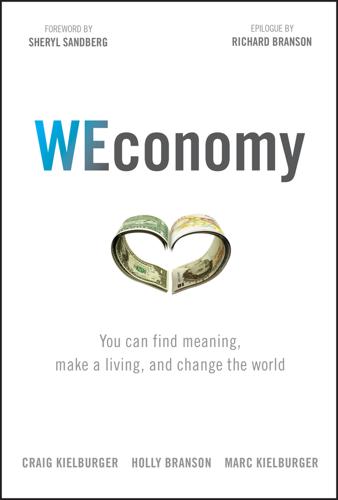
WEconomy: You Can Find Meaning, Make a Living, and Change the World
by
Craig Kielburger
,
Holly Branson
,
Marc Kielburger
,
Sir Richard Branson
and
Sheryl Sandberg
Published 7 Mar 2018
CEOs today want to be seen as titans of business, but also as champions of social causes in their communities and among their peers. And increasingly, business people want to create companies that do good. Elon Musk could have sat on his PayPal fortune and never been heard from again. But he wanted to change the world for the better—and so we have Tesla and SolarCity and talks of colonizing Mars. Bill Gates could still be rolling out Windows updates, but instead we have the Bill and Melinda Gates Foundation. The Most Connected Time in History The past four decades have seen unprecedented leaps forward in the dissemination and availability of information. CNN, the first network to run a 24-hour news cycle, launched in 1980.
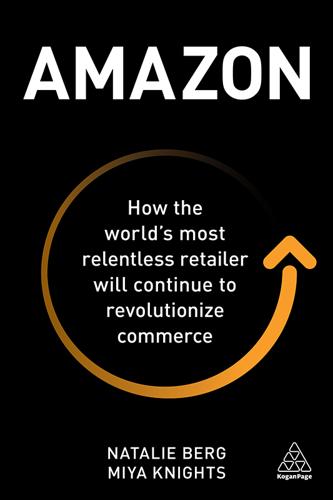
Amazon: How the World’s Most Relentless Retailer Will Continue to Revolutionize Commerce
by
Natalie Berg
and
Miya Knights
Published 28 Jan 2019
And if Elon Musk has his way, his Tesla supercharger stations across the US will feature upmarket convenience stores alongside climbing walls, outdoor cinemas and 1950s-style drive-in restaurants with waiting staff on roller skates – giving customers something to do during the 30 minutes it takes to recharge their vehicles.18 It’s not quite colonizing Mars, but it’s certainly blurring the lines between retail and entertainment. Meanwhile, some retail companies are turning to virtual reality to create playful and immersive instore experiences. North Face ran a campaign allowing its shoppers to don a virtual headset and tour Yosemite National Park and the Moab desert alongside professional athletes and, in 2017, Topshop turned its store windows into an interactive pool scene and let shoppers ride a virtual water slide around Oxford Street.
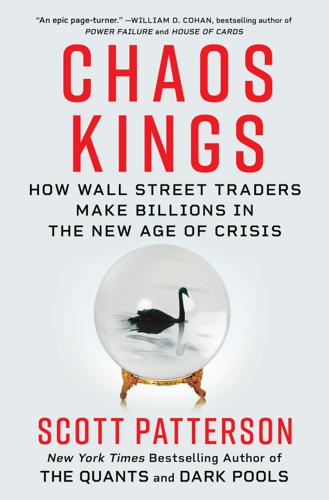
Chaos Kings: How Wall Street Traders Make Billions in the New Age of Crisis
by
Scott Patterson
Published 5 Jun 2023
He’d met Nick Bostrom at a dinner in Oxford in 2008 and quickly chalked him up as a perhaps well-intentioned, head-in-the-clouds dreamer who lacked common sense. “These guys have gone haywire,” he told me. “They’re modeling, but what if the model is wrong? I doubt they’re very good at probability. Before colonizing Mars, make sure the Earth works.” Bankman-Fried, for his part, went a long way toward making Taleb’s case that cryptocurrencies are a cash-incinerating house of cards when his exchange, FTX, imploded in late 2022. Unnerved by rumors of a liquidity crunch at the exchange, its customers rushed to pull their cash out.

The Martian
by
Andy Weir
Published 1 Jan 2011
Of course, they relay e-mail from friends and family, but NASA also sends along choice messages from the public. I’ve gotten e-mail from rock stars, athletes, actors and actresses, and even the President. One of them was from my alma mater, the University of Chicago. They say once you grow crops somewhere, you have officially “colonized” it. So technically, I colonized Mars. In your face, Neil Armstrong! But my favorite e-mail was the one from my mother. It’s exactly what you’d expect. Thank God you’re alive, stay strong, don’t die, your father says hello, etc. I read it fifty times in a row. Hey, don’t get me wrong, I’m not a mama’s boy or anything. I’m a full-grown man who only occasionally wears diapers (you have to in an EVA suit).

Don't Be Evil: How Big Tech Betrayed Its Founding Principles--And All of US
by
Rana Foroohar
Published 5 Nov 2019
Thiel says he finds the general population’s acceptance of the prospect of death “pathological,” and, along with Amazon CEO Jeff Bezos and Google’s Sergey Brin, has spent millions supporting “life extension” research dedicated to “ending aging forever.”9 This, I suppose, is only slightly more ambitious a goal than those of his PayPal partner Elon Musk, also the founder of Tesla and SpaceX, who envisions supersonic commuter travel and colonizing Mars in the not too distant future (though how he’ll fund it is anyone’s guess, since he keeps tanking the price of Tesla’s stock with his security-law-violating tweets, whiskey-and-cannabis-induced rants, and false claims about the company’s financial profile). You could argue that all of this is simply part of the “think different” mind-set, one that is necessary for entrepreneurship and radical change.

The Future of Fusion Energy
by
Jason Parisi
and
Justin Ball
Published 18 Dec 2018
Moreover, interstellar travel is an extremely high bar that fusion thrusters don’t need to meet to be useful. Even a lightweight D–T tokamak, by virtue of its energy density, has the potential make travel within our Solar System much easier. It could be used to explore, mine resources, better defend against asteroids, or even to colonize Mars. Nevertheless, for some reason, interstellar travel seems like the goal to aim for. After all, a wise man once said “Shoot for the moon. Even if you miss, you’ll land among the stars.” Wait a second … no, that’s not right at all. 1To achieve this speed, Juno supplemented its on-board propulsion with a “gravity-assist” slingshot maneuver around the Earth. 2We’d still recommend splurging for the emergency exit row seating.

The Glass Half-Empty: Debunking the Myth of Progress in the Twenty-First Century
by
Rodrigo Aguilera
Published 10 Mar 2020
What is left is a progress that leaves us with a growing list of existential threats, while fooling us into thinking we are ever more capable of addressing them. And rather than mitigate these threats, it appears that the ideologies that are most supportive of the progress narrative are also the ones most likely to fail at doing so. The obsession of so many tech tycoons with colonizing Mars while actively prepping for apocalypse on Earth by buying abandoned nuclear bunkers or houses in remote parts of New Zealand is indicative of some very twisted priorities among our economic elites.55 This is particularly problematic given their increasing control over the technologies that will define our future, at a time of ever-greater reticence by liberal capitalist nation-states in harnessing them for the common good lest it violate market imperatives.
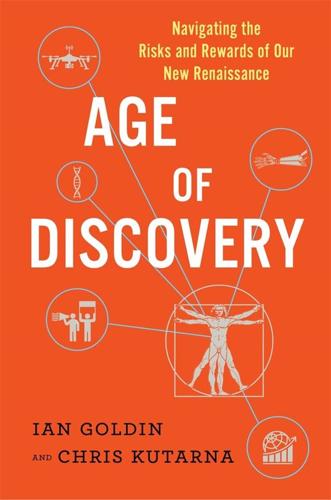
Age of Discovery: Navigating the Risks and Rewards of Our New Renaissance
by
Ian Goldin
and
Chris Kutarna
Published 23 May 2016
Companies and entrepreneurs that are showing the way include: IBM, which in 2014 announced a five-year plan to bet 10 percent of its net income on post-silicon computer chips;30 Google (Alphabet), whose recent long-term bets include a new quantum artificial intelligence lab, self-driving cars and research into anti-aging drugs;31 and Elon Musk, a co-founder of PayPal whose moon shots include SpaceX (a space transport firm whose eventual goal is to colonize Mars) and Tesla (whose diverse aims include the mass-market adoption of electric cars, household battery packs to store renewable energy, and a 600-mile-per-hour hyperloop to transport people between Los Angeles and San Francisco). Dare citizens to fail Academic researchers and think tanks debate endlessly how to make public taxes, laws and regulations better.

Digital Gold: Bitcoin and the Inside Story of the Misfits and Millionaires Trying to Reinvent Money
by
Nathaniel Popper
Published 18 May 2015
Investors and entrepreneurs were cooking up ever more ambitious schemes involving virtual reality, drones, and artificial intelligence, alongside more quotidian projects, like remaking public transportation and the hotel industry. The PayPal founders were among the most ambitious, with Thiel advocating for floating structures where people could live outside the jurisdiction of any national government. Elon Musk, an early PayPal employee and founder of SpaceX, was aiming for the colonization of Mars. If there was ever a time that Silicon Valley believed it could revive the long-deferred dream of reinventing money, this was it. A virtual currency that rose above national borders fitted right in with an industry that saw itself destined to change the face of everyday life. CHAPTER 19 March 2013 At the same time that Bitcoin’s reputation was getting a makeover in Silicon Valley, the physical infrastructure of the Bitcoin network was also undergoing an extensive transformation.
…
CHAPTER 18 186“PayPal will give citizens worldwide more”: Eric Jackson, PayPal Wars (Washington, DC: WND Books, 2004). 187Thiel advocating for floating structures: “Peter Thiel Offers $100,000 in Matching Donations to TSI, Makes Grant of $250,000,” Sea-steading Institute, February 10, 2010, http://www.seasteading. org/2010/02/peter-thiel-offers-100000-matching-donations-tsi-makes-grant-250000/. 187aiming for the colonization of Mars: Adam Mann, “Elon Musk Wants to Build 80,000-Person Mars Colony,” Wired, November 26, 2012, http://www.wired.com/2012/11/elon-musk-mars-colony/. CHAPTER 19 190In June 2012 the founders announced: BFL (Butterfly Labs) to BTCF, June 16, 2012. 190a young Chinese immigrant in New York, Yifu Guo, announced: ngzhang to BTCF, September 17, 2012. 191that power doubled again in just one month after Yifu’s machines: Historical data on the hashing power available at https://blockchain.info/charts/hash-rate. 195“This is a dark day for Bitcoin”: “Breaking: The Blockchain Has Forked,” Bitcoin Trader, March 11, 2013, http://www.thebitcointrader .com/2013/03/breaking-blockchain-has-forked.html. 196“clarify the applicability of the regulations implementing”: The FinCen guidance is available at http://fincen.gov/statutes_regs/guidance/html/FIN-2013-G001.html.

Deep Medicine: How Artificial Intelligence Can Make Healthcare Human Again
by
Eric Topol
Published 1 Jan 2019
Many experts take the opposite point of view, including Alan Bundy of the University of Edinburgh74 or Yann LeCun (“there would be no Ex Machina or Terminator scenarios, because robots would not be built with human drives—hunger, power, reproduction, self-preservation”).75 Perhaps unsurprisingly, then, LeCun’s employer, Mark Zuckerberg, isn’t worried either, writing on Facebook, “Some people fear-monger about how A.I. is a huge danger, but that seems far-fetched to me and much less likely than disasters due to widespread disease, violence, etc.”76 Some AI experts have even dramatically changed their views, like Stuart Russell of UC Berkeley.77 There’s no shortage of futurologists weighing in, one way or another, or even both ways, and even taking each other on.78 I especially got a kick out of the AI and Mars connection, setting up disparate views between Andrew Ng and Elon Musk. Ng said, “Fearing a rise of killer robots is like worrying about overpopulation on Mars before we populate it,”79 whereas Musk has said that the potential rise of killer robots was one reason we needed to colonize Mars—so that we’ll have a bolt-hole if AI goes rogue and turns on humanity.80 Musk’s deep concerns prompted him and Sam Altman to found a billion-dollar nonprofit institute called OpenAI with the aim of working for safer AI. In addition, he gave $10 million to the Future of Life Institute, in part to construct worst-case scenarios so that they can be anticipated and avoided.81 Max Tegmark, the MIT physicist who directs that institute, convened an international group of AI experts to forecast when we might see artificial general intelligence.

Meditations for Mortals: Four Weeks to Embrace Your Limitations and Make Time for What Counts
by
Oliver Burkeman
Published 8 Oct 2024
The quest to dominate nature; progress in medicine; the growth of military power; digital connectivity, which lets us keep abreast of what’s happening thousands of miles away, and air travel, which brings far-off places within reach; helicopter parenting, dieting, in-vitro fertilization, Elon Musk’s proposed colonization of Mars, lab-grown meat: all are plausibly motivated by the human need to feel more in control than before. Rosa certainly doesn’t deny that the quest for controllability has brought incalculable benefits; after all, it’s behind virtually everything that makes life today so much freer from unremitting poverty and pain than it was in medieval times.

Gusher of Lies: The Dangerous Delusions of Energy Independence
by
Robert Bryce
Published 16 Mar 2011
And as part of its continuing attacks on foreign oil in general, and the Saudis in particular, the group has gone out of its way to try to convince citizens that corn ethanol is a force for good. For instance, in a May 6, 2008, editorial in the Chicago Tribune, titled “Food vs. Fuel, a Global Myth,” Set America Free founder, Gal Luft, and his fellow traveler, Robert Zubrin, a vituperative ideologue who advocates colonizing Mars, declared that “farm commodity prices have almost no effect on retail prices.” The two went on to claim that if only more automobiles were manufactured as “flex fuel”—that is, able to burn fuel mixtures containing 85 percent ethanol—then oil would have to compete for its share of the motor fuel market against alcohol fuels made from food crops, weeds, crop residue, and other materials.

Prime Obsession:: Bernhard Riemann and the Greatest Unsolved Problem in Mathematics
by
John Derbyshire
Published 14 Apr 2003
A thing that nonmathematical readers want to know, a question that is always asked when mathematicians address lay audiences, is, What use is it? Suppose the RH were proved true, or false. What prac- EITHER IT’S TRUE, OR ELSE IT ISN’T 359 tical consequences would follow? Would our health, our convenience, our safety be improved? Would new devices be invented? Would we travel faster? Have more devastating weapons? Colonize Mars? I had better unmask myself at this point as a pure mathematician sans mélange, having no interest in such questions at all. Most mathematicians—and most theoretical physicists, too—are motivated not by any thought of advancing the health or convenience of the human race, but by the sheer joy of discovery and the challenge of tackling difficult problems.
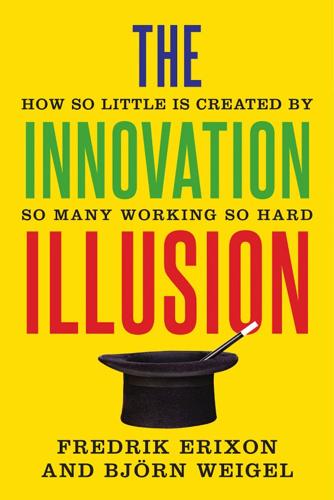
The Innovation Illusion: How So Little Is Created by So Many Working So Hard
by
Fredrik Erixon
and
Bjorn Weigel
Published 3 Oct 2016
Undoubtedly, many of the coming innovations in big data, the Internet of Things, machine intelligence, robotics, and more should be commended, yet they fail to impress, at least our technology-frustrated generation. Perhaps this is to rain on the parade, but for someone who grew up in the wake of Apollo’s moon landing, Stanley Kubrick’s movie 2001: A Space Odyssey, and the original Star Trek series, all that stuff seems a bit dull. What happened to the space race? Humans have yet to colonize Mars. Antigravity is still a dream. Teleportation of complex matters remains a theory. Doc Brown’s flying car in Back to the Future II took him and Marty McFly to October 21, 2015, but today’s world is far less exciting than the one imagined in the movie. We do not get around in flying cars. Nor do we have home fusion reactors or hoverboards.
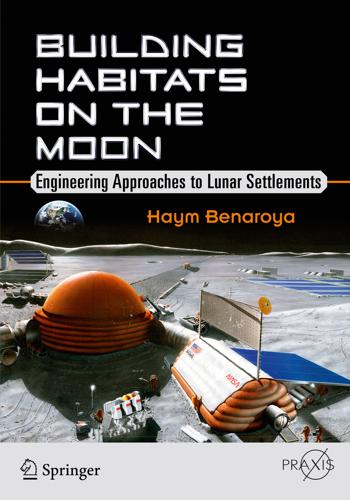
Building Habitats on the Moon: Engineering Approaches to Lunar Settlements
by
Haym Benaroya
Published 12 Jan 2018

Collision Course: Carlos Ghosn and the Culture Wars That Upended an Auto Empire
by
Hans Gremeil
and
William Sposato
Published 15 Dec 2021
Traditional carmakers were consumed by a real fear of being leapfrogged by wannabe automotive players like Tesla, Elon Musk’s darling of Palo Alto, or newbie EV aspirants from China with names few Americans even recognized, such as NIO, Xpeng, and Byton. Tesla alone would soon be giving the established players the heebie-jeebies. Old-guard automakers initially dismissed Tesla as a short-lived vanity project of its quixotic and erratic billionaire founder. Musk, after all, has a spaceship company, SpaceX, and talked about colonizing Mars. Initially, the quality of Tesla’s cars was questionable at best, with glaring gaps between the sheet metal—an offense abhorrent to traditional players, which spent decades perfecting their production prowess. But against all odds, Tesla struck a chord with a fanatic customer base, and its cars soon became the next must-have high-tech gadget, on par with the Apple iPhone.

Googled: The End of the World as We Know It
by
Ken Auletta
Published 1 Jan 2009
A part of the rawness is due to the fact that they are geeks, more comfortable staring at a computer screen than schmoozing, and too zealously impatient to waste time. Page is more reclusive, and odder. He was once asked at a dinner, according to a dinner guest, “What’s the most important thing the government should be doing?” “Colonize Mars!” Page said. Most of the dinner guests nodded as if he had said something profound. Page can be almost monklike. He ruthlessly guards his time, and can treat those who ask him to make a speech or meet reporters as if they were thieves trying to steal his time. A longtime Google employee describes Page this way: “Larry is like a wall.

Taming the Sun: Innovations to Harness Solar Energy and Power the Planet
by
Varun Sivaram
Published 2 Mar 2018
He’d heard this type of criticism many times before. For a man who thinks decades and centuries ahead, Musk was never likely to be fazed by day-trader hysterics. In addition to plotting a transformation of the world’s energy systems, he has set his sights on building reusable launch vehicles and spacecraft to colonize Mars. What sets him apart from other dreamers is an intimate familiarity with the details of his various ventures—from personally leading the investigation into faulty tanks of supercooled propellant that caused a SpaceX rocket to explode in 2016 to insisting on the specifications of retractable door handles on Tesla EVs to minimize their aerodynamic drag.4 This approach has led to astounding results.

In a Sunburned Country
by
Bill Bryson
Published 31 Aug 2000
Today it is all but impossible to believe that White Cliffs, a small blotch of habitations under a hard clear sky, was once a boomtown, with a population of nearly 4,500, a hospital, a newspaper, a library, and a busy core of general stores, hotels, restaurants, brothels, and gaming houses. Today downtown White Cliffs consists of a pub, a launderette, an opal shop, and a grocery/café/gas station. The permanent population is about 80. They exist in a listless world of heat and dust. If you were looking for people with the tolerance and fortitude to colonize Mars, this would be the place to come. Because of the heat, most houses in town are burrowed into the faces of the two bleached hills from which the town takes its name. The most ambitious of these dwellings, and the principal magnet for the relatively few tourists who venture this far, is the Dug-Out Underground Motel, a twenty-six-room complex cut deep into the rocks on the side of Smith’s Hill.

Rocket Dreams: Musk, Bezos and the Trillion-Dollar Space Race
by
Christian Davenport
Published 6 Sep 2025
CHAPTER 3 38 “My friends who want to move”: Jeff Foust, “The Cosmic Vision of Jeff Bezos,” SpaceNews, March 5, 2019, https://spacenews.com/the-cosmic-vision-of-jeff-bezos/. 38 “Sometimes my friends say”: Christian Davenport, “Jeff Bezos on Nuclear Reactors in Space, the Lack of Bacon on Mars, and Humanity’s Destiny in the Solar System,” The Washington Post, September 15, 2016, https://www.washingtonpost.com/news/the-switch/wp/2016/09/15/jeff-bezos-on-nuclear-reactors-in-space-the-lack-of-bacon-on-mars-and-humanitys-destiny-in-the-solar-system/. 39 “Beauty in the office”: Gwynne Shotwell interview at the McCain Institute Sedona Forum, “Technology, Innovation and Our National Interests,” May 6, 2023, https://www.mccaininstitute.org/the-sedona-forum/past-forums/the-sedona-forum-2023/. 39 As a child growing up: Peter Holley, “Elon Musk Has Been Missing Deadlines Since He Was a Kid,” The Washington Post, June 6, 2018, https://www.washingtonpost.com/news/innovations/wp/2018/06/06/elon-musk-has-been-missing-deadlines-since-he-was-a-kid/. 39 “I do have, like, an issue”: Holley, “Elon Musk Has Been Missing Deadlines Since He Was a Kid.” 40 “At SpaceX, we specialize”: Interview with Tim Dodd, “The Everyday Astronaut,” X, May 23, 2022, https://x.com/Erdayastronaut/status/1528810070645125120. 41 At the time, the plan: Christian Davenport, “Elon Musk on Mariachi Bands, Zero-G Games, and Why His Mars Plan Is Like ‘Battlestar Galactica,’ ” The Washington Post, September 28, 2106, https://www.washingtonpost.com/news/the-switch/wp/2016/09/28/elon-musk-on-mariachi-bands-how-he-plans-to-make-space-travel-fun-and-why-his-mars-plan-is-like-battlestar-galactica/. 41 But as Musk had laid out his design: Christian Davenport, “Elon Musk Offers Glimpse of Plans to Deliver Humans to Mars,” The Washington Post, September 27, 2016, https://www.washingtonpost.com/news/the-switch/wp/2016/09/27/elon-musk-to-discuss-his-vision-for-how-he-plans-to-colonize-mars/. 43 In 2005, SpaceX: Davenport, The Space Barons, chap. 8, Kindle. 43 “It only makes sense”: National Press Club Luncheon with Elon Musk, September 29, 2011, https://www.youtube.com/watch?v=xrVD3tcVWTY. 44 A report from 1961: “Joint Report on Facilities and Resources Required at Launch Site to Support NASA Manned Lunar Landing Program: Phase I,” NASA, DOD, July 31, 1961. 47 Disney also set up dummy corporations: James Rufus Koren, “How Disney Used Shell Companies to Start Its Magic Kingdom,” Los Angeles Times, April 9, 2016, https://www.latimes.com/business/la-fi-disney-shell-companies-20160408-story.html. 47 less than $100 an acre: Mark Andrews, “Disney Assembled Cast of Buyers to Amass Land Stage for Kingdom,” Orlando Sentinel, May 30, 1993, https://www.orlandosentinel.com/1993/05/30/disney-assembled-cast-of-buyers-to-amass-land-stage-for-kingdom/?

A Voyage Long and Strange: On the Trail of Vikings, Conquistadors, Lost Colonists, and Other Adventurers in Early America
by
Tony Horwitz
Published 1 Jan 2008
But it’s even further removed from their forgotten English predecessors: a motley crew of slave traders, tourists, castaways, and Tudor knights more akin to conquistadors than to hungry Virginians or pious Pilgrims. In 1558, when Queen Elizabeth ascended the throne, the notion that England was to rule North America would have seem as farfetched as present-day New Zealand colonizing Mars. Elizabeth’s island realm of only three million people didn’t yet include Scotland, much less a global empire. England had just lost Calais, its last toehold on the European continent, and had no presence at all in North America, apart from cod-fishing boats off Canada. England also had a long record of futility when it came to exploring the New World.

Amazon Unbound: Jeff Bezos and the Invention of a Global Empire
by
Brad Stone
Published 10 May 2021
Blue was consumed with New Shepard, but SpaceX had entirely skipped the intermediate stage of building suborbital rockets to take tourists to space, which Bezos felt was necessary in part to acclimate people to the idea of space travel, to achieve his ultimate goal of creating a future where millions of humans are living and working in space. While Bezos and Musk seemed like-minded in their respective space ambitions, they had philosophical differences driving their companies. Musk’s oft-stated goal was to colonize Mars and make humans a “multi-planetary species” as an insurance policy against calamity on Earth. Bezos believed “that of all the planets in the solar system, Earth is by far the best one,” and that lowering the cost of access to space was the path to putting large, vibrant populations onto space stations, where they could harvest solar energy and mine the abundant metals and other resources from the surface of the moon.

The Quiet Coup: Neoliberalism and the Looting of America
by
Mehrsa Baradaran
Published 7 May 2024
These influential men are the visionaries developing and investing in the economy of the future and their response to society’s problems amounts to: more technology. To the fact that, as Buterin’s cited source revealed, men make anywhere between 20 to 60 percent more than equally qualified women with children, artificial wombs. To a dying planet, colonize Mars. Instead of creating a fairer system or rectifying inequalities of historic dimensions or valuing raising children more than, say, mining cryptocurrency, tech’s leading visionaries aspire to create a world of efficient baby making without women. There are a few men richer than Musk, but none who so perfectly embody the ideals of neoliberalism.

The People's Republic of Walmart: How the World's Biggest Corporations Are Laying the Foundation for Socialism
by
Leigh Phillips
and
Michal Rozworski
Published 5 Mar 2019
Today, if we are to be honest, we must recognize that due to the vast costs associated with a viable Mars colony such as the one proposed by Elon Musk’s SpaceX (even if the cost of escaping Earth’s gravity is significantly reduced, for instance, through the use of reusable rockets), there still has to be a profitable commodity resulting from that colony that can be sold back on Earth. If there is one, bully for him. If not, his investors will quickly abandon him. So the colonization of Mars will be a public-sector endeavor or it will not happen. But for many progressives, the story of logistics and planning seems musty and old. Are there not fresh arguments required to convince that barricades must be mounted, forgotten stories of wretched oppression yet to be recounted? It is true that there is little drama or romance to the story of planning—few riveting tales of selfless heroism, brave suffering or righteous fury (although there are not a few episodes of heartbreaking defeat, failure and ruin).

The City and the Stars / The Sands of Mars
by
Arthur C. Clarke
Published 23 Oct 2010
You’ll often see articles pointing out that Mars will always be a drag on the home planet, because of the tremendous natural difficulties under which you’re laboring.” “What about the analogy between Mars and the American colonies?” “It can’t be pressed too far. After all, men could breathe the air and find food to eat when they got to America!” “That’s true, but though the problem of colonizing Mars is so much more difficult, we’ve got enormously greater powers at our control. Given time and material, we can make this a world as good to live on as Earth. Even now, you won’t find many of our people who want to go back. They know the importance of what they’re doing. Earth may not need Mars yet, but one day it will.”
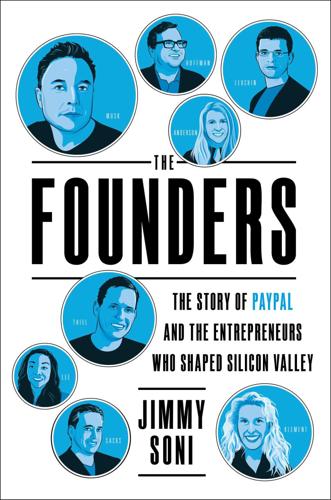
The Founders: The Story of Paypal and the Entrepreneurs Who Shaped Silicon Valley
by
Jimmy Soni
Published 22 Feb 2022
“Elon did SpaceX and made Tesla great because he was fired from X.com.” Those new ventures began briskly; for Musk, there was little time to lick wounds or nurse grievances. Just months after the coup, Mark Woolway took Musk out for drinks. “I asked him what he was going to do next, and he said, ‘I’m going to colonize Mars,’ ” Woolway recalled. “We were at this little bar in Palo Alto called Fanny & Alexander, sitting outside. And he said, ‘My mission in life is to make mankind a multi-planetary civilization.’ And I’m like, ‘Dude, you’re bananas.’ ” Less than two years later, on May 6, 2002, Elon Musk filed paperwork to incorporate a new business, Space Exploration Technologies Corporation.

The Code Breaker: Jennifer Doudna, Gene Editing, and the Future of the Human Race
by
Walter Isaacson
Published 9 Mar 2021
He earned his bachelor’s degree in plant biology from Southern Illinois University and a doctorate in molecular biophysics at the University of Chicago, where he studied how light-activated proteins work. Instead of doing traditional postdoc studies, he wrote about using synthetic biology to help colonize Mars and found himself recruited to work for NASA. But he was not cut out for a hierarchical organization, so he quit to pursue the freedom of being a biohacker. Before getting into CRISPR, Zayner tried a variety of synthetic biology experiments, including on himself. To treat his gastrointestinal problems, he performed a fecal transplant (don’t ask) to transform his gut’s microbiome.

The Self-Made Billionaire Effect: How Extreme Producers Create Massive Value
by
John Sviokla
and
Mitch Cohen
Published 30 Dec 2014
Under Musk’s leadership, PayPal grew dramatically until it was sold to eBay in 2002 for $1.5 billion in stock. He then invested in the company that would become Tesla, a manufacturer of electronic vehicles. Musk is also the founder of SpaceX, an aerospace company pursuing innovations to pave the way for space tourism, as well as for exploration and colonization of Mars. Pierre Omidyar b. 1967, France eBay, Omidyar Network Born in France, Pierre Omidyar moved to the United States as a child. He attended Tufts University in Boston, and worked for Claris, a subsidiary of Apple, before starting Ink Development Corporation, a retail business that also engaged in Internet sales.
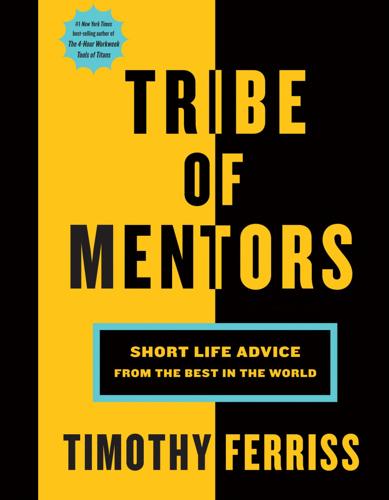
Tribe of Mentors: Short Life Advice From the Best in the World
by
Timothy Ferriss
Published 14 Jun 2017
In this book, at its core, I want to convey the following: Success, however you define it, is achievable if you collect the right field-tested beliefs and habits. Someone else has done your version of “success” before, and often, many have done something similar. “But,” you might ask, “what about a first, like colonizing Mars?” There are still recipes. Look at empire building of other types, look at the biggest decisions in the life of Robert Moses (read The Power Broker), or simply find someone who stepped up to do great things that were deemed impossible at the time (e.g., Walt Disney). There is shared DNA you can borrow.
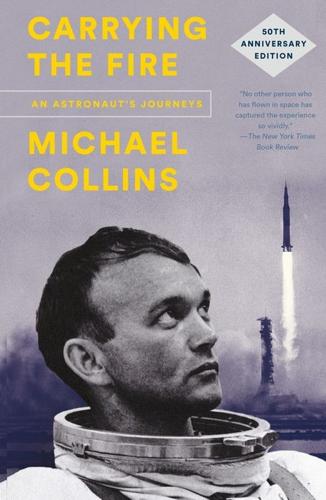
Carrying the Fire: An Astronaut's Journeys: 50th Anniversary Edition
by
Michael Collins
and
Charles A. Lindbergh
Published 15 Apr 2019
They seem to be able to do things faster and cheaper than the government, and a generation that never knew Apollo is awakening to the prospect of further space exploration. Musk is a billionaire, and Bezos is the richest person on the planet. Musk is specializing in reusable rockets, but ultimately wants to colonize Mars, starting as early as 2020 with the unmanned Blue Dragon, and then with an expedition crew of one hundred. (In my Mars book, I thought a crew of six might be more practical.) At any rate, it’s nice to know that exploration has some solid backing, and that private funds are now in the game alongside NASA’s annual $20 billion or so in taxpayers’ money.

Empire of AI: Dreams and Nightmares in Sam Altman's OpenAI
by
Karen Hao
Published 19 May 2025
As the two men sat in the canteen, surrounded by the sounds of massive rocket parts being transported and assembled, Hassabis raised the possibility that more advanced AI, of the kind that might one day exceed human intelligence, could pose a threat to humanity. What’s more, Musk’s fail-safe of colonizing Mars to escape would not work in this scenario. Superintelligence, Hassabis said with amusement, would simply follow humans into the galaxy. Musk, decidedly less amused, invested $5 million in DeepMind to keep tabs on the company. Later, at his 2013 birthday party in the lush wine-growing landscapes of Napa Valley, Musk had gotten into a heated and emotional debate with his longtime friend and Google cofounder Larry Page over whether AI surpassing human intelligence was in fact a problem.

The Power Law: Venture Capital and the Making of the New Future
by
Sebastian Mallaby
Published 1 Feb 2022
Given that Thiel’s allies had ousted Musk from PayPal, relations between the two had not always been cordial. But Musk had picked himself up from that episode, investing his share of the PayPal proceeds in two new startups: Tesla, which made electric cars, and SpaceX, which boasted the modest ambition of cutting the cost of space transportation so radically that colonizing Mars might become possible. Now, at the wedding, Musk told Thiel that he was open to an investment in SpaceX. “Sure,” Thiel said. “Let’s bury the hatchet.”[57] Thiel emailed his partners, suggesting a relatively modest investment of $5 million. Sean Parker responded by washing his hands of the idea: space travel was too far out for him.

Voyage
by
Stephen Baxter
Published 23 May 2011
It’s a late-fall morning — we’re only about eighty days away from the winter solstice, here in the northern hemisphere of Mars. The sky is uniformly ocher. The dust suffuses everything with a pale, salmon hue. The red planet isn’t really so red: the dominant color is a moderate yellow-brown, reflected from the land. There’s no green, or blue, anywhere. If humans ever colonize Mars for good — no, make that when — we’ll have to invent a lot of new words for shades of brown. “I’m almost on the Martian equator. To give you some reference, the great Tharsis Bulge, with its three huge shield volcanoes, is a couple of thousand miles to the east of me; and Olympus Mons, the greatest volcano in the Solar System, is about the same distance to the north.
…
(President Nixon’s initiating memo was similar to that reproduced in the novel — but without the handwritten addendum…) Post-Apollo planning for space entered its most crucial months. And gradually, over this period, NASA lost the case for Mars. To space proponents in 1969, technical logic appeared to indicate a building from the achievements of Apollo to a progressive colonization of the Solar System, including missions to Mars. But the political logic differed. The Apollo era — when the efforts of half a million Americans had been devoted to spaceflight — had been born out of an extraordinary set of circumstances, which were not repeated in 1969. Just a week after Yuri Gagarin’s pioneering first spaceflight in April 1961, President Kennedy sent a memo to Vice President Johnson asking for options: “Do we have a chance of beating the Soviets by putting a laboratory in space, or by a trip around the Moon, or by a rocket to land on the Moon, or by a rocket to go to the Moon and back with a man.

Mapping Mars: Science, Imagination and the Birth of a World
by
Oliver Morton
Published 15 Feb 2003
Meyer remembers overhearing the head of manned space flight lean over and whisper to a colleague, “I had no idea this was going on. We’ve got to look into this.” NASA did look into it. Paine wrote a much-discussed report, “Pioneering the Space Frontier,” that called for the exploration and colonization of Mars, among other things. It attracted the interest of the White House. In 1989, on the twentieth anniversary of the first Apollo landing, George Bush the Elder called for a return to the moon and an outpost on Mars. But the president’s enthusiasm got little further than Spiro Agnew’s had twenty years before.
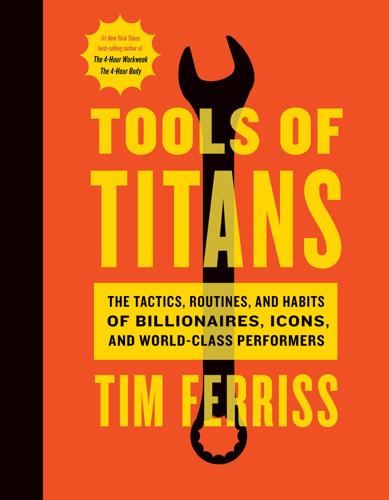
Tools of Titans: The Tactics, Routines, and Habits of Billionaires, Icons, and World-Class Performers
by
Timothy Ferriss
Published 6 Dec 2016
In this book, at its core, I want to convey the following: Success, however you define it, is achievable if you collect the right field-tested beliefs and habits. Someone else has done your version of “success” before, and often, many have done something similar. “But,” you might ask, “what about a first, like colonizing Mars?” There are still recipes. Look at empire building of other types, look at the biggest decisions in the life of Robert Moses (read The Power Broker), or simply find someone who stepped up to do great things that were deemed impossible at the time (e.g., Walt Disney). There is shared DNA you can borrow.
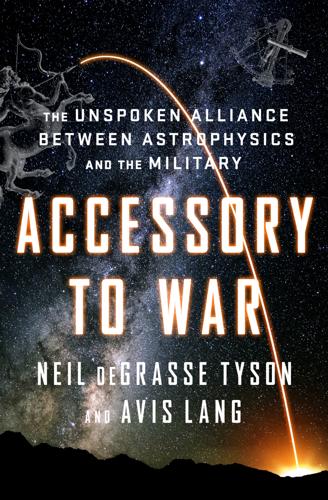
Accessory to War: The Unspoken Alliance Between Astrophysics and the Military
by
Neil Degrasse Tyson
and
Avis Lang
Published 10 Sep 2018
And when spacefarers look at Earth, the separate countries of the schoolroom globe are nowhere to be found. All they see are blue seas, green and tan landmasses, and the white of cloud tops and glaciers: one world, indivisible, humanity’s only home thus far. Some of us may be waiting for the chance to colonize Mars. Not happening tomorrow. In the meantime, maybe we could try pretending we’re astronauts—because in fact, considered in terms of the galaxy, not to mention the universe, we are. 8 SPACE POWER Power is the capacity to achieve a specified outcome. Its sources, trappings, abuses, and allure can be detected everywhere.
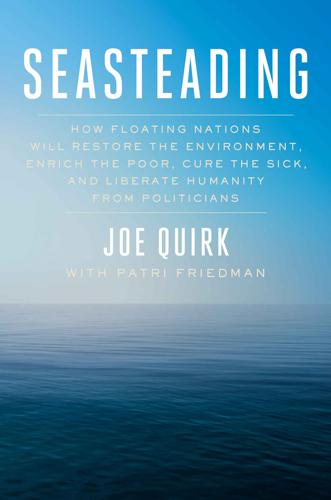
Seasteading: How Floating Nations Will Restore the Environment, Enrich the Poor, Cure the Sick, and Liberate Humanity From Politicians
by
Joe Quirk
and
Patri Friedman
Published 21 Mar 2017
Space Exploration Technologies Corporation, better known as Space X, is an aerospace manufacturer that builds and launches space rockets, founded in 2002 by Peter Thiel’s cofounder at PayPal, Elon Musk, who is also CEO of Tesla Motors. Elon’s goal is to reduce space transportation costs to enable the colonization of Mars. “SpaceX is already 3-D printing essential elements of its rockets rather than purchasing machined parts from a contractor,” says Chris. “SpaceX launches cargo into space at a much lower launch cost than the incumbent players. How? Elon Musk reasons from first principles. Begin with what is known to be true and eliminate assumptions—especially those coming from long-established industries.
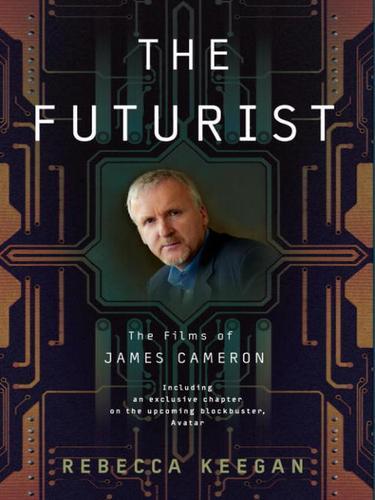
The Futurist: The Life and Films of James Cameron
by
Rebecca Winters Keegan
Published 3 Nov 2009
At the time he addressed the convention, he was planning a fictional 3-D IMAX film and a five-hour TV miniseries meant to depict as accurately as possible the first human journey to Mars. Earlier that year, NASA had launched two probes to Mars, stoking interest in and enthusiasm about the planet, and Cameron had begun to see the human colonization of Mars as our species’ best plan B should Earth become uninhabitable. He had read astronautical engineer Robert Zubrin’s 1996 pro-terraforming tract, The Case for Mars: The Plan to Settle the Red Planet and Why We Must, and hired Zubrin as a consultant on his Mars movie. Cameron’s picture was about a group of explorers who travel to the red planet, establish a settlement there, get in a jam, and use their wits and grit to get out of it.

Blue Mars
by
Kim Stanley Robinson
Published 23 Oct 2010
The longevity treatment only reinforced what they had already been doing.” “So Mars has less to fear from them than Jackie thinks.” “Well, they still want to send up emigrants, that’s part of the overall strategy. And resistance to the one-child rule has been stronger in some Catholic and Muslim countries, and several of those nations would like to colonize Mars as if it were empty. The threat shifts now, from India and China to the Philippines, Brazil, Pakistan.” “Hmm,” Zo said. Talk of immigration always made her feel oppressed. Threatened by lemmings. “What about the exmetas?” “The old Group of Eleven is rebanding in support of the strongest of the old metanats.

Moon Rush: The New Space Race
by
Leonard David
Published 6 May 2019

On the Edge: The Art of Risking Everything
by
Nate Silver
Published 12 Aug 2024
Outer space was supposed to be the next frontier, but the moon landing was in 1969 and there hasn’t been a comparable achievement since then. The American space shuttle program that brought us heroes like Kathryn Sullivan was discontinued in 2011—it’s no wonder that Elon Musk finds admirers for his ambitions of colonizing Mars. Even wars are increasingly fought remotely through drone strikes or precision missiles, reducing opportunities for physical bravery. Perhaps we should view Las Vegas as Erving Goffman saw it, as a last resort for unfulfilled demand for risk that might once have been channeled elsewhere. The poker room might not be the most productive outlet for the River’s energies, but at least your downside there is limited to the table stakes.

Falter: Has the Human Game Begun to Play Itself Out?
by
Bill McKibben
Published 15 Apr 2019
To survive, you’d need to go underground. But to what end? You can go underground on Earth if you want. And the multibillion-dollar attempts at building a “biosphere” here on our home planet (where building supplies arrived on a truck) ended in abject failure. Kim Stanley Robinson wrote the greatest novels about the colonization of Mars, a trilogy that dates back a quarter century. Now, says their author, he thinks the whole thing would be a mistake. “It creates a moral hazard,” he says. People imagine that if we mess up the Earth, we can “always go to Mars or the stars. It’s pernicious.”9 In fact, it’s worse than that. It distracts us from the almost unbearable beauty of the planet we already inhabit.

Origin Story: A Big History of Everything
by
David Christian
Published 21 May 2018
Jan Zalasiewicz and Colin Waters, “The Anthropocene,” in The Oxford Research Encyclopedia, Environmental Science (Oxford: Oxford University Press, 2015), 4–5. Chapter 12. Where Is It All Going? 1. Kim Stanley Robinson’s Mars trilogy—Red Mars (1993), Green Mars (1994), Blue Mars (1996)—offers a rich and vivid science-fictional account of what the colonization of Mars might look like. 2. Joseph Campbell, The Hero with a Thousand Faces, 2nd ed. (Princeton, NJ: Princeton University Press, 1968), 46. 3. J. S. Mill, “Of the ‘Stationary State,’ ” in The Principles of Political Economy, Google Books, http://www.efm.bris.ac.uk/het/mill/book4/bk4ch06. 4. Johan Rockström et al., “A Safe Operating Space for Humanity,” Nature 461 (September 24, 2009): 472–75; updated in Will Steffen et al., “Planetary Boundaries: Guiding Human Development on a Changing Planet,” Science (January 2015): 1–15. 5.

Palo Alto: A History of California, Capitalism, and the World
by
Malcolm Harris
Published 14 Feb 2023
I would annex the planets if I could; I often think of that. It makes me sad to see them so clear and yet so far.”i Today, capital’s ambition extends farther than Rhodes dared to hope: Jeff Bezos and Elon Musk are leading the capitalist charge into space with their respective Blue Origin and SpaceX firms. Musk hopes to colonize Mars, and Bezos told a morning news show that “we can move all heavy industry and all polluting industry off of Earth and operate it in space.”7 There is always another frontier, if you know where to look. At every step, capital used up working people, churning through earth’s only truly inexhaustible resource.

Nomad Citizenship: Free-Market Communism and the Slow-Motion General Strike
by
Eugene W. Holland
Published 1 Jan 2009
Friedman, for example, depicts a plethora of distinct utopian societies scattered across the globe, each embodying its own unique set of ideals uncontaminated by contact with the others.20 Robinson’s sprawling novels, similarly, portray a wide range of different utopian experiments and communities in the course of his account of the colonization of Mars.21 The significance of this recent direction taken in utopian thought and fiction is the departure from singularity and total ity that had seemed inherent in, if not indeed definitive of, the genre: the plurality of utopian impulses and ideals defies the singular perfection of utopia. From here it is but one step—albeit a significant one—to the vo cation of affirmative nomadology to detect and reinforce utopian ideals in actually existing institutions of whatever scale, from neighborhoods to virtual Internet communities to production cooperatives to far-flung global trade arrangements.22 The utopian character of these institutions remains completely distinct from any singular utopia conceived as a total, self-contained community, for they are interwoven transversally with one another and constitute something like a meshwork rather than a unified whole.
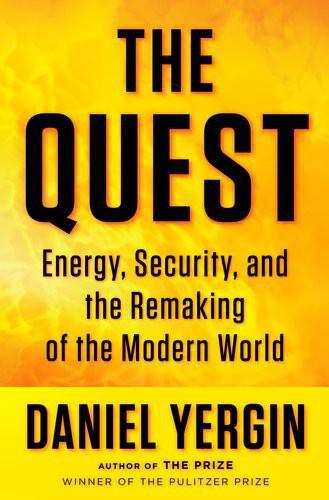
The Quest: Energy, Security, and the Remaking of the Modern World
by
Daniel Yergin
Published 14 May 2011
In 2003 Cocconi came into contact with two Silicon Valley entrepreneurs straight out of the dot-com boom. One of them, Elon Musk, was a cofounders of PayPal. After selling it to eBay, Musk launched SpaceX, a commercial space shuttle business, which Musk intended to be a way station to his larger ambition—enabling people to colonize Mars. The other entrepreneur, Martin Eberhard, offered Cocconi $150,000 in investment for him to experiment with a different kind of battery: a pack composed of lithium-ion batteries, lots and lots of lithium-ion batteries. Cocconi took the money, made the modification, and the car hit 60 miles per hour in only 3.6 seconds.13 Not long after, Eberhard and Musk joined forces and together licensed Cocconi’s technology.

Limitless: The Federal Reserve Takes on a New Age of Crisis
by
Jeanna Smialek
Published 27 Feb 2023
“There will inevitably be those whose plans are grand, and whose patience with democratic accountability low, who will begin to ask why the Fed can’t fund repairs of the country’s aging infrastructure, or finance the building of a border wall, or purchase trillions of dollars of green energy bonds, or underwrite the colonization of Mars,” Quarles warned in a speech he delivered just before leaving the Fed. While his concerns echoed the ones Toomey and Mnuchin had cited in ending the programs at the end of 2020, Quarles clearly did not think that shutting down those facilities rapidly had done enough to seal the Pandora’s box that the corporate bond market rescues, Main Street, the municipal loan program, and the broader crisis response had opened.

The New Gold Rush: The Riches of Space Beckon!
by
Joseph N. Pelton
Published 5 Nov 2016
Technology and specifically space technology can help respond to these challenges. Yet without an agreed global pathway to a sustainable future and a solid plan for coping with the limits to growth the long-term prospects for Earthlings are bleak. It may take decades—maybe even centuries—to devise the technology to create space systems that can colonize the Moon or Mars and to protect us from major cosmic hazards , but the time to start is now. It could take humans millenniums to build capabilities to go to other star systems with any hope of long-term survival . Fortunately we do not have to solve all the challenges at once. Realizing the wealth of resources in the skies can and should help us to start to develop and execute some very long-term plans .
…
Likewise those that are fearful of technological advance, and wish to retain traditional or totalitarian forms of leadership and governance, will seek to forestall not only the technology but also the cultural, social and religious changes that are implied with this sweeping evolution of human history. But massive and revolutionary technological change will be hard to resist. In the space arena, the possibilities of rapid change to support space mining, solar power satellites, space colonization or even terraforming of the Moon and Mars may all accelerate rapidly. In short, the shift to a space-based economy of the future will be driven by Earth-based changes known most succinctly as the Singularity . What was uneconomic or unthinkable just decades ago, may suddenly become technologically and economically feasible at a very accelerated pace.
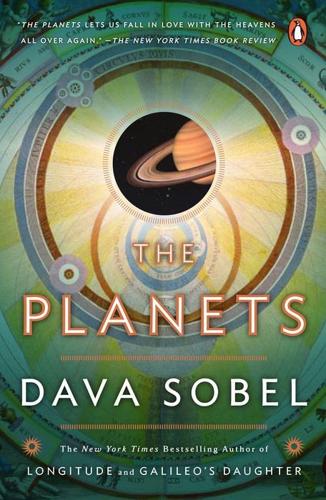
The Planets
by
Dava Sobel
Published 1 Jan 2005
Astrobiologists insist that life on Mars, like the once-plentiful water on Mars, could simply have gone underground to avoid these dangers, and may yet be discovered, extant or extinct, through diligent pursuit. Astronomers agree, asserting that even if Mars ultimately proves void of life, its unique environment will continue to lure robotic and human explorers to its frozen shores. Some visionaries see in Mars a potential homestead on a high frontier, awaiting colonization.* Scientifically feasible programs for “terraforming” Mars to enhance its Earthly likeness propose the fabrication of suitable habitats by, for example, heating the Martian south pole with huge space-based mirrors that would focus and magnify the Sun’s light, forcing the residual polar cap of carbon dioxide to sublime like a geyser of greenhouse gas.

Insight Guides South America (Travel Guide eBook)
by
Insight Guides
Published 15 Dec 2022
PRESERVING THE LAND The 1,240-km (769-mile) narrow, gravel Carretera Austral (Southern Highway) is the result of the Pinochet dictatorship’s effort to tighten links between central Chile and its far-flung Patagonian territory. The road winds through pretty villages, along mint-green rivers and past mountain-rimmed lakes. Sadly, environmental injuries stemming from the mindlessly burned forests during early 20th-century colonization still mar the landscape. The creation of the Red de Parques de Patagonia (National Parks’ Network) was the condition imposed by Kristine Tompkins, wife of the late environmentalist Douglas Tompkins, before she donated the Conservación Patagónica to the state of Chile in 2017. The largest private land donation ever has led to the creation of several national parks, including Pumalin, Melimoyu, and Patagonia.
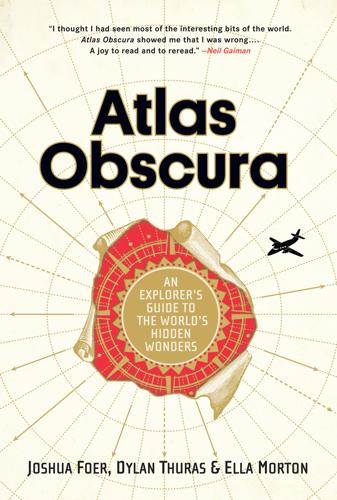
Atlas Obscura: An Explorer's Guide to the World's Hidden Wonders
by
Joshua Foer
,
Dylan Thuras
and
Ella Morton
Published 19 Sep 2016
Working with NASA, Lee and a team of about 30 researchers make yearly summer visits to the spot, conducting field tests to help plan for Mars expeditions. Using a tent city as base camp, the scientists drive all-terrain vehicles to simulate rovers, operate automated drills to look for water, take walks in spacesuit prototypes, and conduct mapping tests using robots. Though human colonization of Mars is still but a distant dream, the Haughton crater experiments offer a practical look into how we might get there. New research projects take place every summer, and the eventual goal is for Red Planet–bound astronauts to use the crater as a training ground before blasting off to Mars for real.
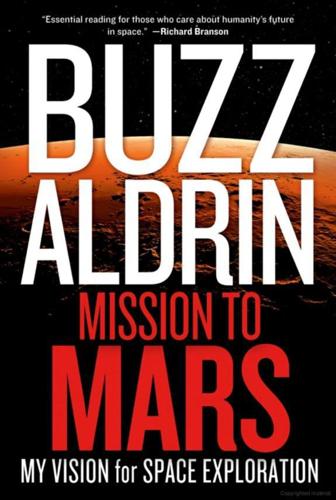
Mission to Mars: My Vision for Space Exploration
by
Buzz Aldrin
and
Leonard David
Published 1 Apr 2013

Power Play: Tesla, Elon Musk, and the Bet of the Century
by
Tim Higgins
Published 2 Aug 2021
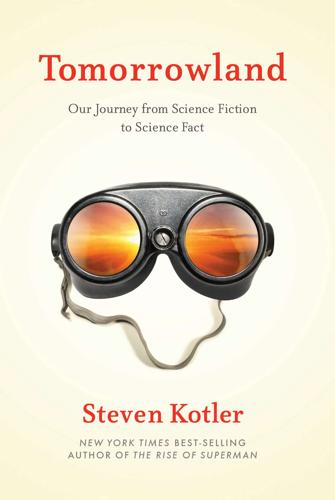
Tomorrowland: Our Journey From Science Fiction to Science Fact
by
Steven Kotler
Published 11 May 2015
But gold in ’dem hills isn’t the only thing fueling our space rock fire. In the past few years, for reasons ranging from “because it’s what’s next” to “because it’s the only way to guarantee the survival of the species,” NASA has firmly committed itself to establishing off-world colonies. While colonizing either the Moon or Mars seems the next logical step, most feel that we should learn to crawl before we walk. “Visiting an asteroid is a fantastic stepping stone to Mars,” says Derek Sears, professor of space and planetary science at the University of Arkansas. “You can test out the hardware and the human behavior.”
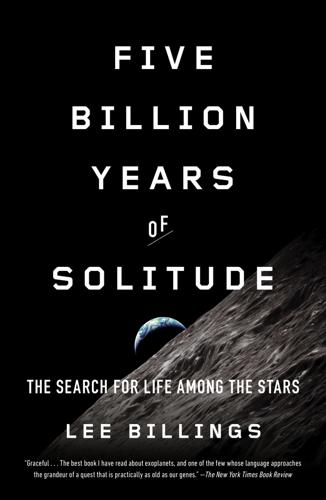
Five Billion Years of Solitude: The Search for Life Among the Stars
by
Lee Billings
Published 2 Oct 2013
Mercury astronaut John Glenn, the first American to orbit the planet, predicted that within a century we would have linked atomic power plants to “anti-gravity devices,” fundamentally rewriting the laws of physics and revolutionizing life and transportation on Earth and in the heavens alike. Another Mercury astronaut, Scott Carpenter, expressed his hope that the anti-gravity “scheme” would help humans colonize the Moon, the Martian moon Phobos, and Mars. The prominent astronomer Fred Whipple suggested that Earth’s population would have stabilized at 100 billion, and that planetary-scale engineering of Mars would have altered the Red Planet’s climate to allow its 700,000 inhabitants to be self-sufficient. The director of NASA’s Office of Manned Space Flight, Dyer Brainerd Holmes, suggested that in 2063 crewed vehicles would be reaching “velocities approaching the speed of light,” and that society would be debating whether to send humans to nearby stars.

Architects of Intelligence
by
Martin Ford
Published 16 Nov 2018
MARTIN FORD: What about the concern that a superintelligent system might someday break free of our control and pose a genuine threat to humanity? ANDREW NG: I’ve said before that worrying about AGI evil killer robots today is like worrying about overpopulation on the planet Mars. A century from now I hope that we will have colonized the planet Mars. By that time, it may well be overpopulated and polluted, and we might even have children dying on Mars from pollution. It’s not that I’m heartless and don’t care about those dying children—I would love to find a solution to that, but we haven’t even landed on the planet yet, so I find it difficult to productively work on that problem.

Seveneves
by
Neal Stephenson
Published 19 May 2015

Liftoff: Elon Musk and the Desperate Early Days That Launched SpaceX
by
Eric Berger
Published 2 Mar 2021
See also Omelek site Rotary Rocket, 142 Roth, Ed, 184 Sales, 95–116 Scaled Composites, 39–40 Scorpius, 79–80 Sea Launch, 125, 126 Seal Beach, 53 Searles, Rachel, 21, 22 Sea salt spray and corrosion, 121–23, 233 Sensors, 124, 136 September 11 attacks (2001), 98–99 Sexism, 51, 62 Sheehan, Mike, 185, 190–91, 193, 195–96 Shotwell, Gwynne, 255–56 at Aerospace Corporation, 102 Air Force and, 61–62 background of, 99–101 at Chrysler, 101–2 Falcon 1’s Washington, D.C. debut, 105 Flight One failure, 120 Flight Four launch, 202–3 success, 210–11 hiring of, 95–98 Lockheed Martin and, 112–13 at Microcosm, 50, 95, 96, 102 Omelek site, 54–55 Quake parties, 17–18 sales, 17, 54–55, 96, 97–98, 103–4, 106–7, 112–14, 115, 116, 216, 220 222 Shotwell, Robert, 202–3, 210 Sloan, Chris, 262 Slosh baffles, 127–28, 138, 140 Society of Women Engineers, 100 Solar sails, 10, 164 Soyuz, 93 Space and Missile Defense Command, U.S. Army (USASMDC), 55–57 Space Angels, 113 Space colonization, 12, 217, 232, 244, 256. See also Mars mission Space ethos, 138–39, 236 Space Launch Complex 3 (SLC-3), 52–53, 65 Space policy, 64–65, 145, 169, 220, 229–30, 235 SpaceShipOne, 39–40 Space Shuttle Atlantis, 90 Space Shuttle Challenger disaster, 65, 101 Space Shuttle Columbia disaster, 90, 107 Space Shuttle Discovery, 70–71, 102 SpaceX Dragon.

Icehenge
by
Kim Stanley Robinson
Published 29 May 1994
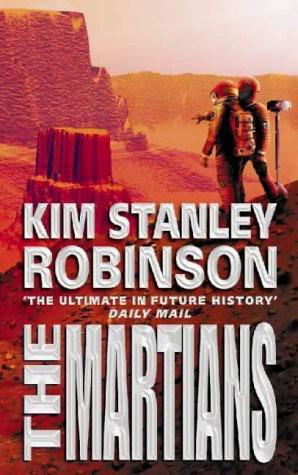
Martians
by
Kim Stanley Robinson
Published 6 Jul 1999
he cries. “What a Brit he is. You know climbers are the same everywhere. I come all the way to Mars and find just the people you'd expect to find on Ben Nevis. 'Course it stands to reason, doesn't it? That New Scotland school and all.” It is true; from the very start of the colonization, British climbers have been coming to Mars in search of new climbs, and many of them have stayed. “And I'll tell you,” Arthur continues, “those guys are never happier than when it's blowing force ten and dumping snow by the dump truck. Or not snow, actually. More like sleet, that's what they want. One degree rain, or wet snow.

The Diet Myth: The Real Science Behind What We Eat
by
Tim Spector
Published 13 May 2015

Red Mars
by
Kim Stanley Robinson
Published 23 Oct 1992
” — Michael Bishop, Science Fiction Age “If Red Mars were a movie, it would feature a cast of charismatic stars . . . big special effects and set-pieces, and a literate script full of intrigue, romance, and high adventure . . . Fortunately, it is a novel, and as fully-imagined a science fiction novel as any I can think of.” — Locus “This epic tale of colonization, settlement, and revolution on Mars is a people story despite lots of technical detail: it is impossible to stop reading.” — The Philadelphia Press “Splendid characters in a brilliantly realized and utterly convincing setting . . . For power, scope, depth, and detail, no other Martian epic comes close. . . .

What to Think About Machines That Think: Today's Leading Thinkers on the Age of Machine Intelligence
by
John Brockman
Published 5 Oct 2015

To Sleep in a Sea of Stars
by
Christopher Paolini
Published 14 Sep 2020
Some of the cities/outposts are funded by corporations. Some by nations back on Earth. Either way, colonies are highly dependent on supplies from Sol to begin with, and most of the colonists end up deep in debt after buying the various pieces of equipment they need. 2154–2230: Weyland colonized. Numenism founded on Mars by Sal Horker II circa 2165–2179 (est.). As they grow, colonies begin to assert their independence from Earth and Sol. Clashes between local factions (e.g., the Unrest on Shin-Zar). Relations with Earth grow fractious. Venus tries and fails to win its independence in the Zahn Offensive.

Mycelium Running: How Mushrooms Can Help Save the World
by
Paul Stamets
Published 14 Apr 2005
It is possible that proto-germplasm could travel throughout the galactic expanses riding upon comets or carried by stellar winds. This form of interstellar protobiological migration, known as panspermia, does not sound as farfetched today as it did when first proposed by Sir Fred Doyle and Chandra Wickramasinghe in the early 1970s. NASA considered the possibility of using fungi for interplanetary colonization. Now that we have landed rovers on Mars, NASA takes seriously the unknown consequences that our microbes will have on seeding other planets. Spores have no borders. FIGURE 10 Hurricane Isabella approaches North America in October 2003. FIGURE 11 Spiral galaxies conform to the same archetypal pattern as hurricanes and mycelium.
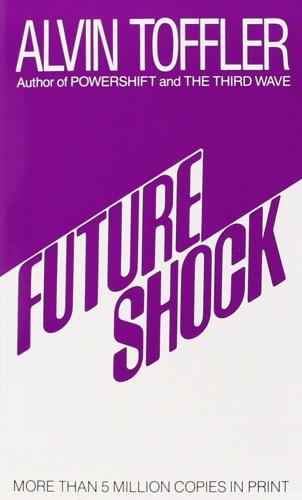
Future Shock
by
Alvin Toffler
Published 1 Jun 1984
Daniele Petrucci in Bologna and other scientists in the United States and the Soviet Union, makes it possible for women to have babies without the discomfort of pregnancy. The potential applications of such discoveries raise memories of Brave New World and Astounding Science Fiction. Thus Dr. Hafez, in a sweep of his imagination, suggests that fertilized human eggs might be useful in the colonization of the planets. Instead of shipping adults to Mars, we could ship a shoebox full of such cells and grow them into an entire citysize population of humans. "When you consider how much it costs in fuel to lift every pound off the launch pad," Dr. Hafez observes, "why send full-grown men and women aboard space ships? Instead, why not ship tiny embryos, in the care of a competent biologist ...

The Rough Guide to South America on a Budget (Travel Guide eBook)
by
Rough Guides
Published 1 Jan 2019
In the summer season (mid-Dec to March), millions of city-dwellers descend on the place, generating vibrant eating, drinking and entertainment scenes (or overcrowding and overpricing, depending on your point of view). Though Mar del Plata may have lost some of its lustre, glimpses of glamour still abound in the city’s restored early twentieth-century mansions – check out French-style Villa Ortiz Basualdo, now the Museo Municipal de Arte, at Av Colón 1189, the MAR Museo Municipal de Arte Contemporáneo, Avenida F.U. Camet and Dardo Rocha, and the Centro Cultural Victoria Ocampo, Matheu 1851. The renowned International Film Festival is held in Mar del Plata in November, showing new Argentine and international films. Nearby Cariló and Mar de los Pampas are both eco-resorts that provide a more laidback seaside experience, set within beautiful pine forests.

Lonely Planet Chile & Easter Island (Travel Guide)
by
Lonely Planet
,
Carolyn McCarthy
and
Kevin Raub
Published 19 Oct 2015

Spain
by
Lonely Planet Publications
and
Damien Simonis
Published 14 May 1997
The fifth- and sixth-floor rooms have large balconies at no extra cost. The family also runs Pensión and Restaurante del Mar, slightly cheaper and just down the road at Calle Pintor Lozano 5, where guests staying at the Los Ángeles eat. Hotel Colón (96 585 04 12; www.hotelcolon.net; Paseo de Colón 3; s €38-62, d €48-96; mid-Mar–Oct; ) Conveniently positioned where the old town meets Playa del Poniente, the Colón is great value outside high season. Half-board is only €4 more than B&B, though don’t expect fine cuisine. West-facing rooms have great views of Playa del Poniente. Hotel La Santa Faç (96 585 40 63; www.santafazhotel.com in Spanish; Calle Santa Faç 18; s/d/tr €50/85/125; Apr-Oct; ) This long-established hotel, sandwiched between two streets in the old quarter, is friendly and full of character.